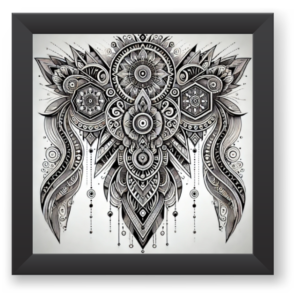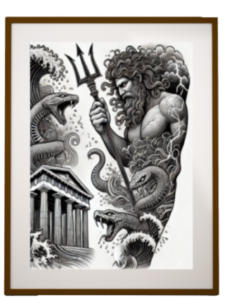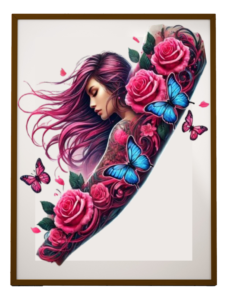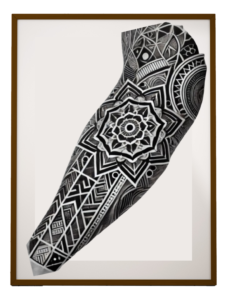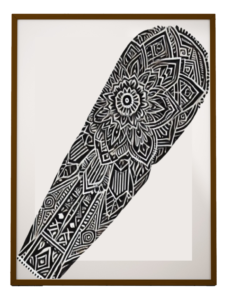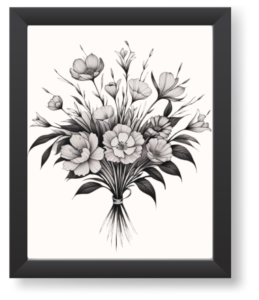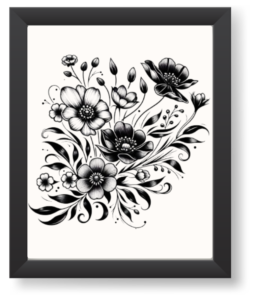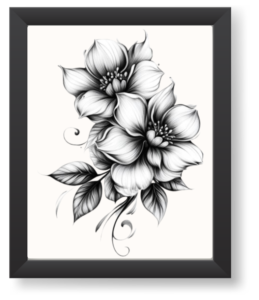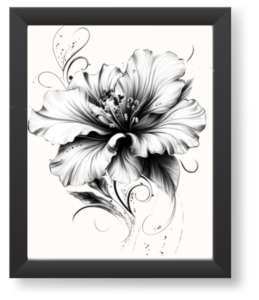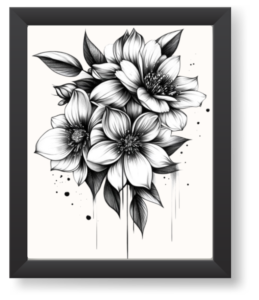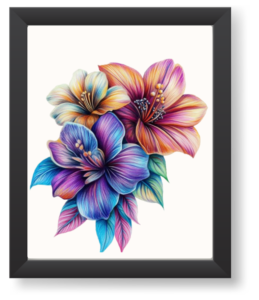JESUSPRECIADO789
Pin Up Cowgirl Tattoo: Blending Western Charm with Vintage Glamour
Pin-up cowgirl tattoo blends vintage charm with Wild West flair. These eye-catching designs capture the spirit of the American frontier with a touch of playful femininity. Pin-up cowgirl tattoos showcase bold and beautiful artwork that expresses a wild side while adding a dash of vintage appeal to your body art.

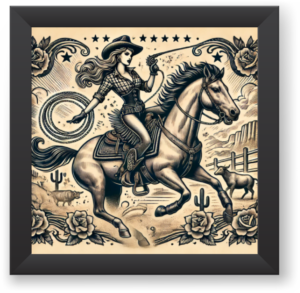
You can choose from a variety of styles for your pin-up cowgirl tattoo. Some popular options include realistic portraits, traditional American designs, or cartoonish pin-ups. The tattoo can feature a cowgirl riding a horse, twirling a lasso, or striking a flirty pose in Western attire.
When picking a pin-up cowgirl tattoo, think about the size and placement that works best for you. These designs can range from small and simple to large and detailed. Common spots for these tattoos include the arm, thigh, or back. Remember to choose a skilled artist who can bring your vision to life and create a stunning piece of body art that you’ll love for years to come.
History of Pin Up Art
Pin up art has a rich history spanning over a century. This iconic style has evolved from early illustrations to modern tattoo designs.
Origins in the 19th Century
Pin up art began in the late 1800s with “cheesecake” art. These images showed women in suggestive poses. Artists like Charles Dana Gibson and J.C. Leyendecker made this style popular.
Magazines and ads often featured these illustrations. The Gibson Girl became a well-known image during this time. She represented the ideal American woman.
As printing technology improved, pin up art became more widespread. Postcards and calendars often featured these alluring images.
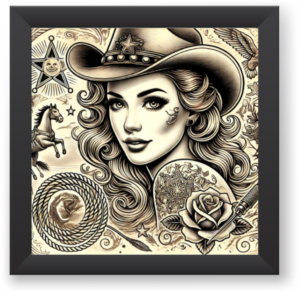

Golden Age in the 1940s and 1950s
World War II sparked the golden age of pin up art. Soldiers carried pin up images for morale. Famous pin up artists like Alberto Vargas and Gil Elvgren gained recognition.
Pin up girls appeared on aircraft nose art and barracks walls. Actresses like Betty Grable and Rita Hayworth became pin up icons. Their photos boosted troop morale.
After the war, pin up art continued to thrive. It appeared in calendars, playing cards, and advertisements. The style influenced fashion and popular culture.
Evolution into Modern Tattoo Art
Pin up tattoos emerged as a popular form of body art. They blend vintage aesthetics with modern techniques. These tattoos celebrate both past and present styles.
You can find pin up tattoos in various styles. Old School and Neo-Traditional are common choices. Artists often add contemporary elements to classic pin up designs.
Disney-inspired pin ups and cowgirl pin ups show the style’s versatility. Pin up tattoos continue to evolve, reflecting changing tastes and cultural influences.
Cultural Significance

Pin up cowgirl tattoos carry deep cultural meaning. They blend feminine imagery with Western themes in unique ways.
Nostalgia and Vintage Appeal
Pin up cowgirl tattoos tap into nostalgia for mid-20th century Americana. They evoke a romanticized vision of the Old West and vintage glamour. The retro aesthetic appeals to those who admire classic American art and pin up culture.
These tattoos often feature a stylized, idealized beauty standard from past decades. The vintage look can feel timeless and elegant to many tattoo enthusiasts.
For some, pin up cowgirl tattoos represent simpler times and traditional values. Others appreciate them as kitschy, fun nods to pop culture history.


Military Popularity
Pin up cowgirl tattoos have long been popular in military circles. During World War II, soldiers often got pin up girl tattoos as good luck charms or reminders of home.
The cowgirl theme adds an all-American twist to the classic pin up design. It symbolizes the country and ideals service members fight to protect.
These tattoos can represent comfort and fantasy for deployed troops. The attractive, spirited cowgirl image offers an escape from harsh realities of war.
Some military members choose pin up cowgirl tattoos to honor the morale-boosting pin ups of wartime. The tattoos keep this cultural tradition alive in a personal way.
Design Elements of Pin Up Cowgirl Tattoos

Pin up cowgirl tattoos blend Wild West imagery with vintage glamour. These designs feature unique elements that capture the spirit of the American frontier and pin-up art.
Iconography and Symbolism
Cowgirl pin-up tattoos often include iconic Western symbols. You’ll see cowboy hats, boots, and lassos as common elements. Many designs feature revolvers or sheriff’s badges to represent the frontier spirit.
Animals like horses and cattle frequently appear in these tattoos. They symbolize the cowgirl’s connection to nature and her work on the range.
Playing cards, dice, or whiskey bottles might be included to show the wilder side of Western life. Feathers or dream catchers can add a Native American influence to the design.
Color and Stylistic Choices
Pin up cowgirl tattoos often use bold, vibrant colors. Red is popular for lips and clothing, while blues and browns create a denim effect. Skin tones range from realistic to stylized, depending on the artist’s approach.
You’ll find both color and black-and-gray designs. Traditional pin-up cowgirl tattoos often use a limited color palette for a classic look.
Some artists add a touch of realism, while others opt for a more cartoonish style. Shading and line work vary based on the chosen style.
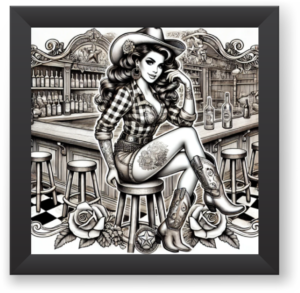
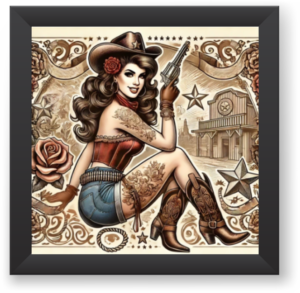
Influence of Traditional American Tattoos
Pin up cowgirl tattoos draw heavily from traditional American tattoo styles. You’ll notice bold outlines and simple color fills, hallmarks of old-school tattooing.
These designs often incorporate banner elements with text. Names, dates, or phrases like “Born to Ride” are common additions.
The pin-up girl’s pose is crucial. She might be riding a horse, twirling a lasso, or striking a flirtatious pose. Her outfit typically blends Western wear with revealing pin-up style clothing.
Traditional rose designs or other Americana elements may be added to enhance the classic tattoo feel.
Placement Considerations
Choosing the right spot for your pin-up cowgirl tattoo is key. It affects how the design looks and how easy it is to show or hide. Think about your daily life and clothing when picking a spot.
Visibility and Clothing Interactions
Your tattoo’s placement can change how often you see it. Arms and legs are easy to show off. The back or side might be better if you want to keep it private.
Think about your work clothes. A tattoo on your lower arm might show in short sleeves. Upper arms or thighs can be hidden by most clothes.
Skin movement matters too. Areas that stretch a lot, like your stomach, can change how the tattoo looks over time.

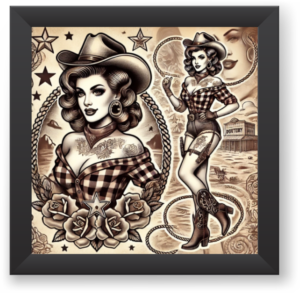
Size and Detail Planning
The size of your tattoo affects where it can go. A big, detailed cowgirl might look best on your back or thigh. Smaller designs fit well on arms or ankles.
Thin script tattoos work on small areas like wrists or behind ears. Large designs need more space, like your back or upper arm.
Think about future tattoos too. Leave space if you want to add more later. A cowgirl on your forearm might limit other arm tattoos.
Detail level matters. Fine lines need smooth skin. Avoid areas with lots of hair or wrinkles for the best look.
Popular Themes

Pin-up cowgirl tattoos offer a wide range of designs that blend classic Western imagery with vintage glamour. These tattoos often feature iconic elements that capture the spirit of the American frontier and rodeo culture.
Classic Cowgirl Imagery
Pin-up cowgirl tattoos typically showcase beautiful women in Western attire. You’ll see designs with cowgirls wearing cowboy hats, boots, and denim. Some popular elements include:
• Plaid shirts tied at the waist • Fringe jackets or vests • Bandanas or neckerchiefs • Lasso or rope props
These tattoos often portray the cowgirl in flirtatious or playful poses, reminiscent of vintage pin-up art. The style can range from realistic to cartoon-like, depending on your preference.
Rodeo and Western Scenes
Rodeo themes are common in cowgirl pin-up tattoos. You might choose designs featuring:
• Cowgirls riding bucking broncos • Barrel racing scenes • Cattle roping action
Other Western scenes include:
• Saloon settings with swinging doors • Desert landscapes with cacti and tumbleweeds • Campfire scenes under starry skies
These tattoos often incorporate additional Western symbols like horseshoes or cattle skulls to enhance the frontier feel.
Modern Twists on the Genre
Contemporary pin-up cowgirl tattoos often blend traditional elements with modern styles. You might see:
• Cowgirls with colorful hair or tattoos • Steampunk-inspired Western gear
Some designs incorporate fantasy elements:
• Cowgirl mermaids • Zombie cowgirls • Cowgirl superheroes
These modern interpretations allow for creativity while still honoring the classic pin-up cowgirl aesthetic. They can be a great way to express your personality through your tattoo choice.
The Tattoo Process

Getting a pin up cowgirl tattoo involves several key steps. You’ll need to choose the right artist, have a consultation, and take care of your new ink properly.
Selecting a Skilled Artist
Finding the right tattoo artist is crucial for your pin up cowgirl tattoo. Look for an artist with experience in pin up and Western-style designs. Check their portfolio for examples of similar work.
Ask to see healed tattoos, not just fresh ones. This will give you a better idea of how the artist’s work holds up over time.
Read reviews from past clients. Pay attention to comments about the artist’s skill, professionalism, and cleanliness.
Don’t rush this step. Take your time to find an artist whose style matches your vision.
Pre-Tattoo Consultation
Once you’ve chosen an artist, schedule a consultation. This is your chance to discuss your ideas and get professional input.
Bring reference images of pin up cowgirl tattoos you like. Be open to the artist’s suggestions for improving the design.
Discuss size and placement. Your artist can help you choose a spot that will showcase the tattoo well.
Talk about color choices. Pin up tattoos often use bold colors, but your artist may have ideas to make yours unique.
Ask about pricing and how long the tattoo will take. This helps you plan and budget accordingly.
Aftercare and Healing
Proper aftercare is vital for your pin up tattoo to heal well. Follow your artist’s instructions carefully.
Keep the tattoo clean and moisturized. Use fragrance-free soap and lotion recommended by your artist.
Avoid soaking the tattoo in water for the first few weeks. This means no swimming or long baths.
Stay out of direct sunlight while your tattoo heals. Sun exposure can fade the colors and slow healing.
Don’t pick at scabs or peel off flaking skin. Let your tattoo heal naturally to preserve the design.
If you notice any signs of infection, contact your artist or a doctor right away.

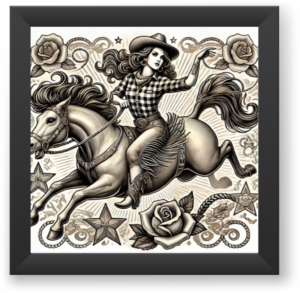
Body Art Tattoo: A Timeless Canvas of Self-Expression and Storytelling
Body Art Tattoo
There are different types of body art. The history of body art is long-standing and deeply rooted in cultures worldwide as a form of self-expression, identity, and tradition. In recent years, body art, particularly tattoos, has gained significant popularity, evolving into a mainstream form of artistic expression.
Today, body art tattoo culture embraces diverse styles, techniques, and meanings, offering people a unique way to decorate their bodies and tell their stories. Let’s dive into different forms of body art and how tattoos stand out as the ultimate creative outlet on skin.
Types of Body Art
Before focusing on tattoos, it’s essential to recognize the spectrum of body art forms, each with its distinct techniques, cultural relevance, and purpose. Here are some popular types:
- Body Painting
Body painting uses temporary pigments and dyes, typically applied directly to the skin. Body painting is designed to wash off, making it ideal for performances, festivals, and themed events. Artists use their creativity to transform the human body into a canvas, often exploring abstract themes, vivid colors, and intricate designs. - Henna (Mehndi)
Henna is a temporary form of body art originating from South Asia and the Middle East, where it has been practiced for centuries. The paste, made from the henna plant, is applied in intricate designs that fade within weeks. Henna tattoos are common in cultural celebrations like weddings. Symbolizing luck, joy, and beauty. - Scarification
Scarification involves creating intentional scars on the skin. It has cultural significance in many African and Indigenous communities. Scarification is achieved by cutting or branding, and the resulting patterns or raised scars hold symbolic meanings unique to each culture. - Piercing
Body piercing is another popular form of body modification. Piercings allow individuals to express their style and identity, with a wide range of options, from traditional ear and nose piercings to more intricate body locations.
Body Art Tattoos: The Timeless Canvas of Ink
Among these forms of body art, tattoos have stood out as a lasting form of self-expression and artistic storytelling. The category body art tattoo, has evolved significantly, ranging from minimalist designs to intricate, large-scale pieces that span entire body parts. Here are some popular tattoo styles that have shaped the tattoo industry:
1. Traditional Tattoos
Traditional tattoos, often known as American traditional, are bold and iconic, with heavy outlines and bright colors. They typically feature classic designs like roses, anchors, and pin-up girls, celebrating American tattoo heritage.
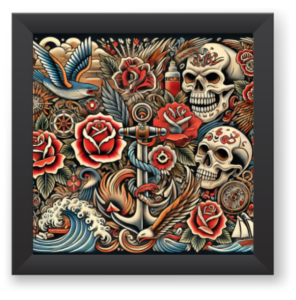
This design tells a story of strength, resilience, and timeless values rooted in classic tattoo symbolism. Anchors often represent stability and strength, suggesting a foundation that remains steady through life’s storms. Skulls symbolize mortality and the cycle of life and death, a reminder of both life’s fragility and the courage to face its end. Eagles represent freedom, power, and a warrior spirit, conveying themes of independence and self-reliance. Roses, with their vibrant colors, add elements of beauty and love, highlighting the balance between strength and gentleness. Together, these elements create a narrative about enduring life’s challenges with courage, cherishing love, and embracing freedom.
Each motif flows naturally into the next, weaving together a visual tale of life’s trials and the values that keep us grounded through them. The overall effect is a rich story of the journey through life, marked by resilience, beauty, and a fierce commitment to one’s path.

This traditional-style tattoo design tells a story of resilience, patriotism, and the powerful interplay between life, strength, and honor. Each element contributes to a cohesive narrative:
- Eagle: A symbol of freedom, power, and pride, often associated with patriotic themes, particularly in American traditional tattoos. The eagle’s outstretched wings and intense expression convey courage and vigilance.
- Anchor: Represents stability and grounding, often associated with sailors and those who find strength in staying rooted, even amidst turbulent times.
- Skull: A reminder of mortality, symbolizing bravery in the face of death and the appreciation of life’s fleeting nature.
- Roses: Symbolize beauty, love, and the ability to thrive despite challenges. In this context, they may represent the beauty in strength and resilience.
- Dagger: Represents protection, strength, and the willingness to face life’s battles.
- Ribbon and Stripes: With colors reminiscent of a flag, the ribbon ties into the patriotic theme, adding a sense of loyalty and pride.
Together, these elements create a powerful visual tale about honor, the courage to stand strong in the face of adversity, and the enduring beauty of resilience and patriotism. This tattoo celebrates the ideals of strength, loyalty, and a deep connection to roots and values.
2. Black and Grey Tattoos
Using only shades of black and grey, these tattoos emphasize shading and contrast to create a realistic, photo-like effect. From portraits to complex scenery, black and grey tattoos showcase impressive depth and detail.

This black and grey tattoo design tells a story of life’s fleeting nature, the inevitability of time, and the beauty found in embracing both. The hourglass symbolizes the passage of time, a reminder that moments are finite, and every grain of sand represents both past memories and future hopes slipping away. Skulls in the design speak to mortality, capturing the idea that life is precious precisely because it is temporary. Roses add a layer of complexity, symbolizing beauty amidst impermanence, growth, and the intertwining of life and death.
The raven often embodies mystery, transformation, and insight into the unknown, suggesting a journey into self-discovery and wisdom gained through life’s experiences. Together, the elements evoke themes of endurance, acceptance, and the profound beauty found in each phase of life. Shadows and fine lines enhance the narrative, creating depth and dimensionality that reflects the layered nature of existence. The design is a tribute to the timeless dance between life and death, urging the wearer to appreciate each moment fully.
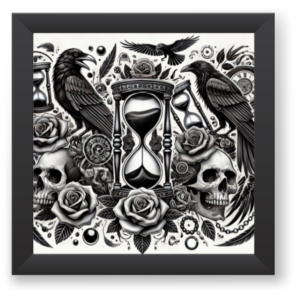
This black and grey tattoo design tells a story of time, mortality, and transformation. Each element carries a symbolic meaning that weaves together to create a narrative about the passage of life and the inevitability of change.
- Hourglass: Represents the passage of time, reminding us of life’s fleeting nature and the importance of each moment. The hourglass is a traditional symbol of mortality, signifying that time is running out and that every life has an endpoint.
- Skulls: Symbolize mortality and the transient nature of human life. Together with the hourglass, they reinforce the theme of impermanence and the inevitability of death.
- Ravens: Known as symbols of mystery, transformation, and the afterlife, ravens add a spiritual layer to the story. They suggest wisdom gained from understanding life’s transitory nature, as well as a connection to the unknown.
- Roses: Often symbolize beauty, love, and resilience. Here, they remind us of the beauty that can exist alongside themes of mortality, emphasizing that life, though fleeting, has moments of grace and beauty.
- Chains and Rings: Could represent the cycles and connections of life, binding moments, people, or experiences together. They may also suggest the bonds we create in life and how they persist, even after death.
Together, these elements craft a powerful message about embracing the present, acknowledging the inevitability of death, and finding beauty in every phase of existence. This design reflects a deep respect for the cycles of life and an appreciation for the transformative nature of time.
3. Neo-Traditional Tattoos
Neo-traditional tattoos take the bold lines and classic motifs of traditional tattoos but add modern flair with intricate details and expanded color palettes. Neo-traditional art emphasizes realism while preserving the boldness of traditional tattoo art.
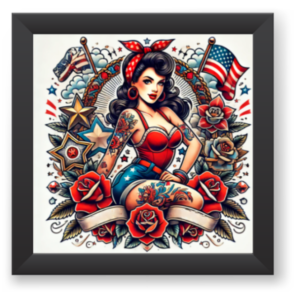
This design tells a story of timeless Americana, celebrating the spirit of freedom, resilience, and beauty that defines classic pin-up culture. The central pin-up girl embodies both strength and elegance, a nod to vintage aesthetics with a modern twist. Surrounding her are iconic symbols like stars, roses, and the American flag, which connect her to themes of patriotism, nostalgia, and the enduring allure of the American dream.
The banners and ornate elements in the background create a sense of pride and tradition, while the roses add layers of romance and timeless beauty. Each element—whether it’s the flag waving in the background or the vibrant, bold stars—symbolizes the unity of past and present, illustrating how tattoo art has evolved but remains connected to its roots. This design celebrates the dynamic nature of tattoo culture, showing how it can reflect both personal identity and cultural heritage. It’s a tribute to the iconic pin-up girl, a symbol of confidence and charm that resonates across generations.

4. Minimalist Tattoos
With a focus on simplicity, minimalist tattoos use fine lines, small shapes, or simple symbols. These tattoos are often more subtle, but they can be powerful in conveying personal meaning or artistic taste without occupying large areas.

5. Watercolor Tattoos
Emulating the look of watercolor paintings, these tattoos bring splashes of color and gradient effects that appear to flow seamlessly on the skin. Watercolor tattoos are known for their vibrant, soft appearance and often feature natural themes like flowers, animals, or landscapes.
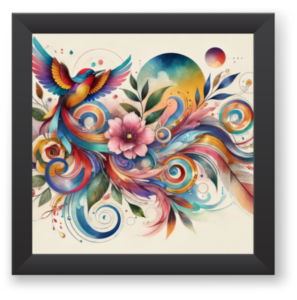
This watercolor tattoo design tells a story of freedom, transformation, and the vibrant beauty of life’s journey. The central bird, with its colorful wings spread, symbolizes freedom and the desire to explore and transcend limitations. Birds often represent the spirit’s journey and aspirations, suggesting a quest for new horizons and personal growth.
The surrounding flowers and leaves emphasize themes of natural beauty, renewal, and the cyclical nature of life, as flowers bloom, flourish, and eventually fade. The flowing, abstract shapes echo the currents of life—ever-changing, dynamic, and full of energy. The swirling patterns hint at the interconnectedness of all things, blending individual elements into a harmonious whole.
Together, the elements create a narrative of embracing change, celebrating the beauty found in each moment, and understanding that life’s path is a continuous, colorful journey filled with growth, discovery, and transformation. This design invites the wearer to embrace their personal evolution, free of boundaries, with grace and vitality.

This vibrant, watercolor-style tattoo design tells a story of freedom, growth, and the beauty of transformation. Each element within the composition adds to a narrative that emphasizes the journey of self-discovery and the connection between the natural and spiritual worlds.
- Colorful Bird (Possibly a Phoenix): The bird, with its wings spread wide in vivid colors, represents freedom, renewal, and transformation. If it is intended as a phoenix, it symbolizes rebirth and rising from challenges, embodying resilience and the ability to start anew.
- Flowing Leaves and Feathers: These elements add a sense of fluidity and movement, symbolizing growth, evolution, and the continual flow of life. The leaves suggest a connection to nature and the earth, grounding the design in a harmonious balance between earth and sky.
- Floral Elements (Sunflower, Other Flowers): Flowers in this design signify beauty, growth, and life’s fleeting, delicate moments. The sunflower, known for its strength and ability to turn towards the light, adds a hopeful and positive touch, representing resilience and optimism.
- Abstract Swirls and Spirals: The spirals and swirls represent cycles, continuity, and the infinite nature of life. They may also signify inner exploration and self-discovery, as spirals often symbolize a journey inward, suggesting that true transformation begins within.
- Soft Watercolor Blending: The watercolor effect gives the design a dreamlike quality, enhancing the sense of fluidity and organic growth. It suggests that life is a canvas where colors blend, evolve, and change, emphasizing adaptability and openness to new experiences.
- Geometric Circles and Patterns: The circular elements add balance and symmetry, symbolizing harmony, unity, and the interconnectedness of all things. They provide structure within the free-flowing design, representing the balance between chaos and order, spontaneity and grounding.
Overall, this design tells a story of a person who values freedom, transformation, and personal growth. It embodies the idea that life is a journey of continual rebirth and exploration, filled with moments of beauty, strength, and interconnectedness. It celebrates the individual’s resilience, adaptability, and willingness to embrace change, finding beauty in every phase of life.
6. Geometric Tattoos
Geometric tattoos rely on precise lines, patterns, and shapes to create symmetrical designs. They are popular for their versatility and ability to incorporate abstract ideas or meaningful symbols in intricate detail.

This geometric tattoo design tells a story of unity, order, and the interwoven nature of existence. The use of symmetrical shapes like triangles, circles, and hexagons symbolizes balance and harmony, representing the idea that all elements in life are interconnected. Mandala patterns and repeating shapes reflect the cycle of life and the concept of transformation—how each element evolves and fits perfectly within a larger, universal pattern.
The flow between geometric shapes suggests that life is a cohesive journey, each moment, decision, or experience connected to the next. This design embodies themes of stability and self-discovery, with every angle and curve coming together to represent personal growth and enlightenment, creating a visual journey through order, balance, and infinite possibility.

This intricate geometric tattoo design tells a story of balance, interconnectedness, and the pursuit of inner harmony. The highly detailed, symmetrical patterns suggest themes of structure and unity within the universe, as well as a journey inward to uncover layers of meaning and self-discovery.
- Central Mandala: The mandala at the core of the design represents completeness and the universe. Mandalas are symbolic of the self and the journey to find inner peace and wholeness. This central position suggests that the core of life’s journey is self-understanding and spiritual awakening.
- Symmetrical Patterns and Geometric Shapes: The intricate, repeating shapes and patterns convey a sense of order and balance. They illustrate the interconnected nature of existence, where each part contributes to the whole. The use of triangles, circles, and stars reinforces concepts of unity, stability, and growth.
- Layers of Complexity: The layered approach of the design reflects the multifaceted nature of life and the individual. Each layer represents different aspects of self or phases of personal growth, suggesting that one must look deeper to discover the full essence of being.
- Sacred Geometry Symbols: The inclusion of symbols from sacred geometry (such as hexagons, circles, and triangles) indicates a spiritual connection and respect for the order of the universe. These shapes symbolize harmony, balance, and the belief that certain patterns resonate throughout nature and life.
- Lines and Flowing Details: These elements create a sense of movement and connectivity, as if every part of the design is linked to the other. It represents how all things are connected—our actions, thoughts, and energies contribute to a larger whole.
This design tells a story of an individual who seeks balance and understanding through self-reflection and connection with universal principles. It symbolizes a journey of personal evolution, where harmony is achieved by aligning with the natural rhythms and structures of life. In essence, it is a celebration of inner peace, interconnectedness, and the beauty of finding one’s place within the larger cosmos.
Final Thoughts
Body art tattoos continue to grow in popularity and respect as a legitimate form of art, breaking boundaries and shifting perceptions worldwide. Whether through minimalist designs or elaborate full-body creations, tattoos allow individuals to transform their skin into a living canvas. Some people choose tattoos to mark significant milestones or life changes, while others might wear designs that honor family heritage, personal beliefs, or artistic inclinations. capturing personal stories, beliefs, and beauty for years to come. Whether you’re considering a small, meaningful tattoo or a large, intricate piece, body art tattoos offer a powerful way to wear your personality and history proudly on your skin. Offering individuals a limitless opportunity to express themselves authentically.
Full Arm Sleeve Tattoo Ideas
The best full arm sleeve tattoo ideas are those that blend your personality, symbolism, and art into a cohesive masterpiece. Here are a few standout concepts that I believe represent the pinnacle of arm sleeve tattoo designs:
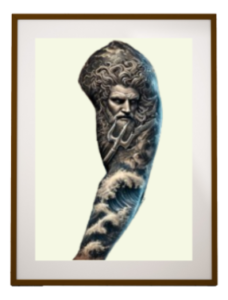
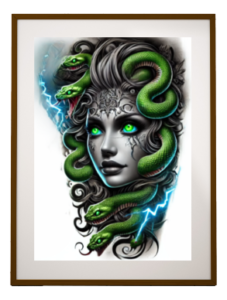
1. Mythology-Inspired Sleeves
- Design: Greek, Norse, or Egyptian mythology can make for rich, complex designs. The gods, creatures, and symbols from mythological stories are timeless. I once designed a Greek mythology sleeve featuring Poseidon’s trident wrapping around the arm, Medusa’s serpentine hair spiraling down, and an intricate, hyper-realistic rendering of the Parthenon. The dynamic interplay of power and symbolism made it captivating.
- Why it works: Mythology allows for a mix of dramatic action and symbolic storytelling that naturally lends itself to intricate sleeve designs.

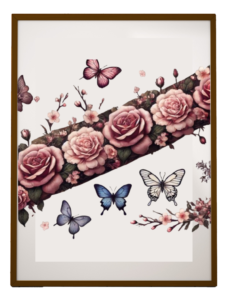
2. Floral and Nature Blends
- Design: One of the most beautiful sleeves I’ve worked on was a botanical masterpiece. It combined realistic roses, cherry blossoms, and vines entwined with animals like hummingbirds and butterflies. The idea was to represent growth, rebirth, and nature’s elegance.
- Why it works: Floral tattoos have soft curves and natural flow that are perfect for the contours of an arm. It’s also highly customizable and can blend vibrant colorwork with softer shading.
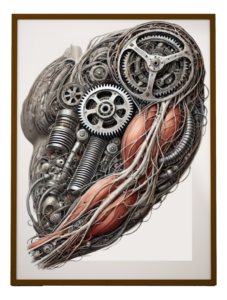
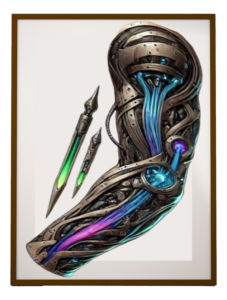
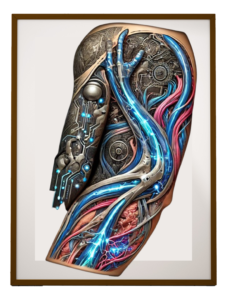
3. Biomechanical Fusion
- Design: A biomechanical sleeve is a striking combination of machinery and human anatomy, where flesh seems to peel away, revealing metal gears and cybernetic structures beneath. One of my most complex biomechanical pieces involved intricate mechanical elements intertwined with organic muscles, creating a visually stunning contrast.
- Why it works: The contrast between organic and mechanical elements creates a futuristic, dystopian vibe. It’s perfect for clients into sci-fi or cyberpunk aesthetics.
4. Blackwork and Geometric Precision
- Design: Blackwork sleeves rely heavily on solid black ink, geometric patterns, and sometimes spiritual motifs like mandalas. I once did a blackwork sleeve with intricate geometric lines that seamlessly merged into mandalas and abstract sacred geometry. This style focuses on precision and minimalism.
- Why it works: The bold contrast of black ink allows for a sharp, modern look, and the mathematical precision of geometry gives the sleeve a sense of order and balance.
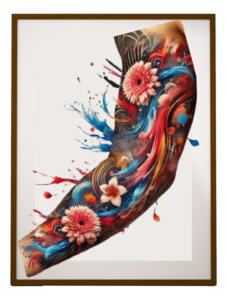
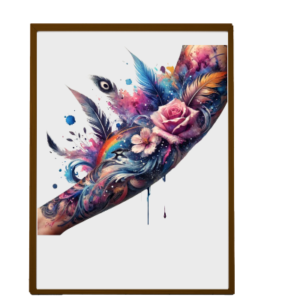
5. Watercolor Explosion
- Design: Watercolor tattoos give the appearance of being painted on the skin. I created a sleeve where splashes of color seemed to bleed into a vivid phoenix, rising from the flames, with splatters of blue, red, and orange washing down the arm. It’s a contemporary style, full of life and movement.
- Why it works: The fluidity of the watercolor technique creates a sense of freedom and unpredictability, making the tattoo feel more artistic and painterly.
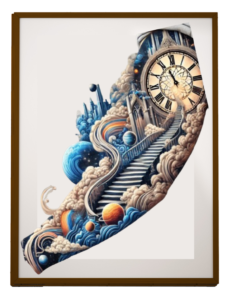
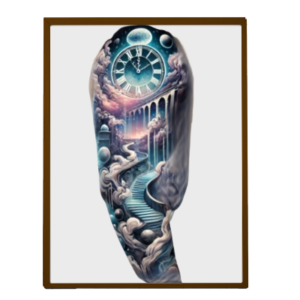
6. Surreal Dreamscapes
- Design: Surrealism brings dreamlike, abstract elements into a cohesive yet mind-bending sleeve. Think Dali-esque melting clocks combined with floating islands, optical illusions, or mystical animals. One of my favorite surreal sleeves featured a floating city above a stormy sea with fragmented objects floating around it, symbolizing the fragility of dreams.
- Why it works: Surrealism challenges the norms of reality, allowing the artist to create something truly unique and personal to the wearer.
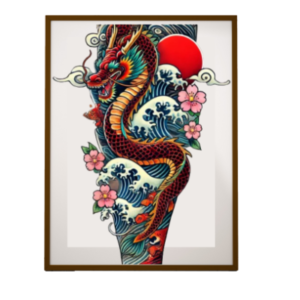
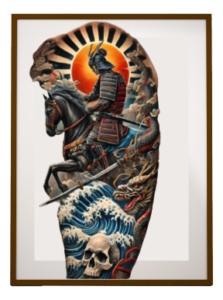
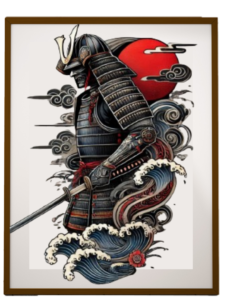
7. Japanese Irezumi
- Design: Traditional Japanese sleeves, or Irezumi, are incredibly detailed and iconic. They often depict dragons, koi fish, cherry blossoms, or samurai. A standout design I worked on was a dragon and koi fish locked in battle, surrounded by waves and wind, symbolizing the balance of strength and perseverance.
- Why it works: The flow of traditional Japanese elements—whether it’s water, wind, or waves—seems almost designed to naturally wrap around the human body. The cultural depth and the intricate patterning make for powerful storytelling pieces.
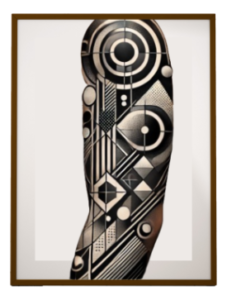
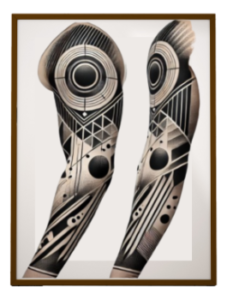
8. Abstract and Minimalist Combo
- Design: A more recent trend is abstract and minimalist sleeve tattoos. I’ve seen and designed sleeves where simple lines, shapes, and dots are combined with negative space to create intricate patterns. One sleeve used just black ink to form fragmented cubes and lines, almost like a deconstructed piece of architecture.
- Why it works: For someone who loves subtle, modern art, this style plays with space and simplicity to create something that feels airy yet profound.
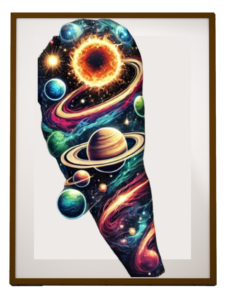
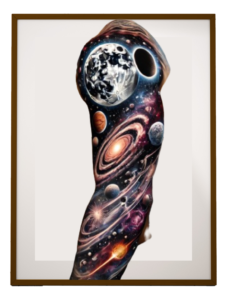
9. Cosmic and Astronomical Designs
- Design: A celestial-themed sleeve can be ethereal and awe-inspiring. One design had planets orbiting up the arm, galaxies swirling, and a comet streaking across a nebula. The upper arm featured a black hole, pulling in stars.
- Why it works: Space is the ultimate frontier, and its visual beauty is perfect for expansive designs that offer limitless interpretations. The glowing colors and blending shades create a sense of wonder.
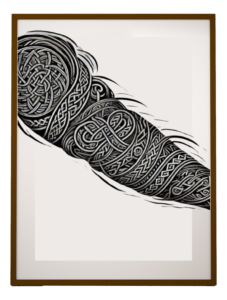
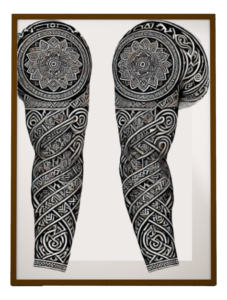
10. Celtic and Tribal Motifs
- Design: Celtic knotwork, Norse runes, and tribal tattoos are deeply rooted in history and tradition. A sleeve featuring Celtic knots with a fierce wolf’s head emerging from the weaving design made for a piece that combined heritage with raw power.
- Why it works: The continuous lines of knots or tribal patterns give a sense of infinity, making them perfect for sleeves where continuity is key.
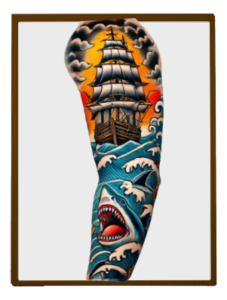
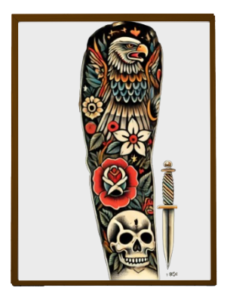
11. Traditional Tattoo Design
Design:
- Bold, Thick Lines: Traditional tattoos are known for their strong, black outlines that give each design a bold, defined structure. The simplicity of the lines helps the tattoo hold up over time, maintaining clarity and visibility even after years.
- Limited, Vibrant Color Palette: Typically, traditional tattoos use a limited range of bright, bold colors like red, yellow, green, blue, and black. These colors contrast strongly with the skin, ensuring that the design remains vivid for a long time. Shading is often minimal, and the solid color fills give the tattoos a striking, classic look.
- Iconic Imagery: Traditional tattoo designs often draw inspiration from nautical symbols (anchors, ships, and swallows), military motifs, animals (panthers, snakes, eagles), and pin-up girls. Each of these elements is steeped in history and meaning. For example, sailors would get swallows to symbolize their return home, or pin-up girls for their aesthetic appeal and cultural significance.
- Symbolism and Heritage: Traditional tattoos carry rich symbolism and meaning, rooted in maritime history and the early days of American tattooing. This is why elements like daggers, hearts, skulls, roses, and sparrows are iconic, each representing specific ideals such as bravery, love, life and death, or freedom.
Why Traditional Tattoo Design Works:
- Timeless Appeal: The bold lines and simple, yet impactful color choices make traditional tattoos easily recognizable and visually powerful. They work well on a variety of skin tones and body types, and they maintain their sharpness over time due to the clarity of the designs.
- Cultural and Historical Relevance: Traditional tattooing has roots in seafaring and military traditions. The symbolism behind the imagery makes it personal for the wearer, while also tying them into a rich history of tattooing. The style itself has stood the test of time and is still popular in modern tattoo culture.
- Durability: Because traditional tattoos use thick outlines and large patches of solid color, they hold up incredibly well as the skin ages. The designs don’t become muddy or lose their clarity as quickly as more intricate styles might.
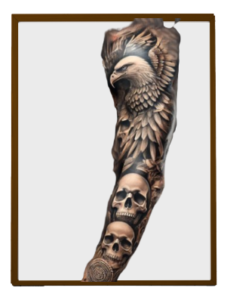
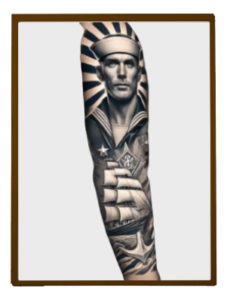
Full Arm Sleeve Tattoos for Men
Full arm sleeve tattoos are often associated with masculinity and strength, allowing men to make bold statements through their body art. Traditional designs such as skulls, eagles, and tribal patterns are popular choices, as they typically symbolize power and courage. The bold lines and vibrant colors found in these tattoos create striking visuals that command attention. Black and grey full arm sleeve tattoos also create striking visuals with shading, perspective, and line work. These techniques create an illusion of dimension and brings depth .
Additionally, incorporating military or nautical themes can represent honor, bravery, and a connection to heritage, making these designs meaningful for many men.
Realism and portrait tattoos have also gained traction among men, particularly when depicting iconic figures, historical events, or personal heroes. This style allows for intricate detailing and lifelike representations, creating a powerful tribute that showcases individual admiration and respect. Many men choose to feature family members or mentors, ensuring that their sleeves carry personal significance while also demonstrating artistic skill and craftsmanship.
Furthermore, geometric and abstract tattoos are increasingly popular among men, offering a modern, minimalist approach to full arm sleeves. These designs can symbolize balance, harmony, and the complexities of life, appealing to those who appreciate contemporary art. Men often blend these styles with traditional elements, resulting in a unique and personalized sleeve that embodies their identity. Ultimately, full arm sleeve tattoos provide ample opportunity for self-expression, allowing men to showcase their individuality and personal stories through their chosen designs.
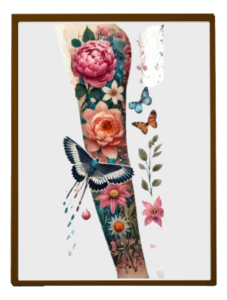
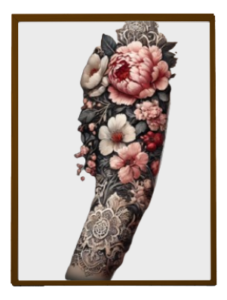
Full Arm Sleeve Tattoos for Women
Full arm sleeve tattoos have gained immense popularity among women, as they offer a powerful means of self-expression and creativity. Many women opt for designs that feature floral elements, delicate patterns, or meaningful symbols that reflect their personalities. Floral tattoos, such as peonies, lotuses, or wildflowers, are particularly favored for their beauty and intricate details. These designs can be combined with other elements, such as butterflies or birds, to create a harmonious and feminine aesthetic that flows gracefully along the arm.
Another growing trend among women is the use of watercolor techniques in their full arm sleeve tattoos. This style mimics the appearance of a watercolor painting, with vibrant splashes of color that create an ethereal effect. Watercolor tattoos allow for a high degree of creativity, enabling women to express their artistic side. These designs can range from abstract representations to more detailed images, making them a versatile choice for those who appreciate a modern twist on traditional tattooing.
Moreover, symbolic tattoos are increasingly popular among women seeking to convey deeper meanings through their body art. Designs featuring symbols of empowerment, such as the phoenix rising from the ashes or the owl representing wisdom, can serve as daily reminders of strength and resilience. These tattoos not only showcase personal empowerment but also resonate with the wearer’s journey and aspirations, making them a powerful addition to any full arm sleeve.
Final Thoughts:
The best tattoo sleeves are personal and tell a story that resonates with the wearer. Whether the design is intricate and symbolic, or bold and minimal, it’s the connection between the art and the individual that makes it stand out as one of the greatest. If I had to choose a favorite, I’d lean toward surreal dreamscapes, where I could truly push the boundaries of reality and imagination.
What Does a Butterfly Tattoo Symbolize
A butterfly tattoo often symbolizes a variety of meanings, depending on cultural, personal, or artistic interpretations. Here are some of the common symbolisms associated with butterfly tattoos:

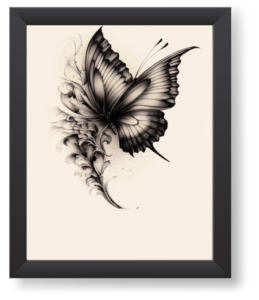
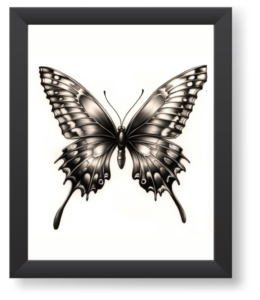
1. Transformation and Rebirth
- The butterfly is most famously associated with transformation because of its life cycle. It starts as a caterpillar, goes through a period of metamorphosis in a chrysalis, and emerges as a beautiful butterfly. This journey from one form to another is often seen as a metaphor for personal growth, change, and rebirth.
2. Freedom and Independence
- Butterflies are free-spirited creatures that flutter gracefully through the air, symbolizing freedom and independence. Many people choose butterfly tattoos to represent their desire for or achievement of personal freedom.
3. Beauty and Femininity
- Butterflies are often associated with beauty and grace, making them a popular symbol of feminine beauty. They are delicate, colorful, and intricate, which resonates with those who see them as representations of natural elegance and allure.

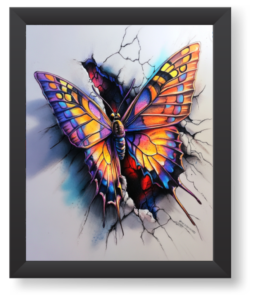

4. Resilience and Overcoming Struggles
- The process a butterfly undergoes to emerge from its cocoon can symbolize resilience and strength. A butterfly tattoo can represent overcoming challenges, hardships, or struggles, serving as a reminder of endurance and the ability to emerge stronger.
5. Hope and New Beginnings
- Because the butterfly’s life is often associated with significant transformation, it can also symbolize hope and the beginning of a new chapter in life. People might choose a butterfly tattoo to mark the end of a difficult period and the start of a hopeful future.
6. Spirituality and the Soul
- In various cultures and spiritual practices, butterflies are seen as symbols of the soul. In some Native American traditions, butterflies are thought to carry the souls of the deceased, acting as a connection between the physical world and the spiritual realm.
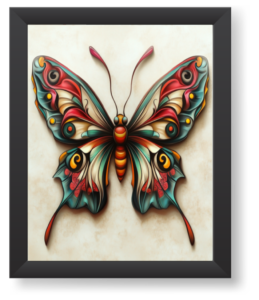
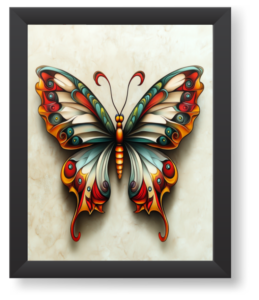
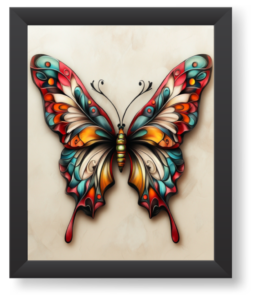
7. Love and Joy
- Butterflies are often linked to positive emotions such as love and joy because of their light and colorful appearance. Some people get butterfly tattoos to represent these emotions, especially in relationships or periods of happiness.
8. Renewal and Growth
- For some, a butterfly tattoo is a symbol of personal development. Much like how a butterfly emerges from a cocoon, it can represent an individual’s journey of self-discovery, personal evolution, or the shedding of past constraints to embrace new experiences.
9. Cultural and Mythological Significance
- In Japanese culture, butterflies represent joy and longevity, and they are often considered symbols of the soul. In ancient Greek mythology, butterflies were also linked to the soul, as the Greek word for butterfly (“psyche”) also means soul.

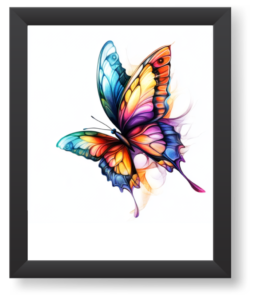
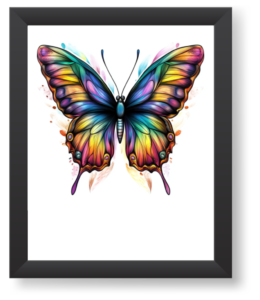
10. Femininity and Femininity
Butterflies are often chosen by women for their symbolic connection to feminine traits, including beauty, grace, and gentleness.
In essence, a butterfly tattoo can carry deeply personal meanings or reflect universal themes such as change, beauty, hope, or the journey of life. Each person’s butterfly tattoo may have its unique significance based on their experiences and beliefs.
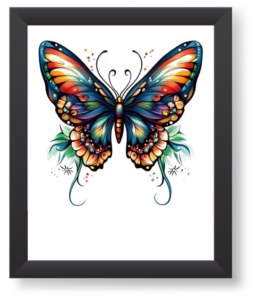
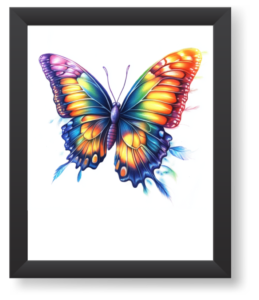
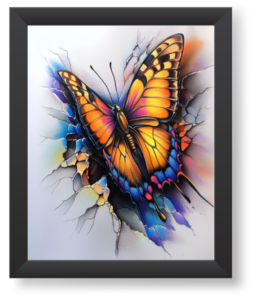
A butterfly with flowers tattoo carries a deeper and often more nuanced symbolism compared to a tattoo featuring just a butterfly. Here’s how the addition of flowers can add layers of meaning to the tattoo, beyond the obvious visual difference:
1. Connection with Nature and Growth
- Butterfly and flowers together highlight the harmonious relationship between beauty and nature. While the butterfly symbolizes transformation and freedom, the flowers often represent growth, life, and the cycles of nature. Together, they signify the interconnectedness of change and renewal in nature.
2. Fertility and New Beginnings
- Flowers, especially when paired with butterflies, can symbolize fertility, creation, and the nurturing aspects of life. A butterfly alone represents transformation, but the addition of flowers can suggest that this transformation is leading to new beginnings, fresh starts, or the blossoming of a new chapter in life.
3. Feminine Energy
- While butterflies are already commonly associated with femininity, the addition of flowers can amplify the tattoo’s representation of grace, beauty, and femininity. Flowers like roses, lilies, or cherry blossoms have long been symbolic of feminine energy, love, and purity. Combining them with a butterfly emphasizes themes of delicate beauty and elegance.
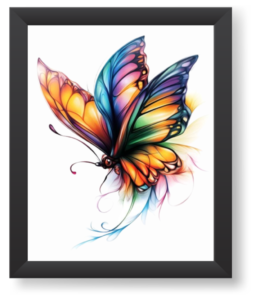
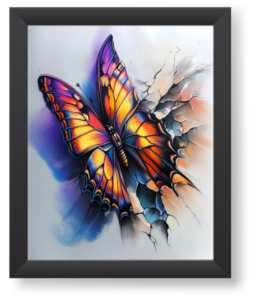
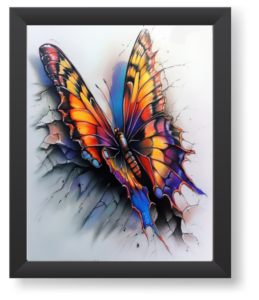
4. Balance Between Change and Stability
- A butterfly represents change, evolution, and metamorphosis. Flowers, however, often symbolize stability in nature, blooming in predictable cycles. Together, they can convey the balance between life’s constant changes (butterfly) and life’s grounded, stable moments (flowers). This combination can symbolize the acceptance of change while appreciating life’s enduring beauty.
5. Symbolism of Specific Flowers
- The meaning of the tattoo can shift based on the type of flowers depicted alongside the butterfly:
- Roses might symbolize love, passion, or beauty.
- Lotus flowers can symbolize spiritual growth, enlightenment, or overcoming obstacles.
- Sunflowers are associated with happiness, positivity, and loyalty.
- Cherry blossoms represent the transient beauty of life or renewal.
- Each type of flower adds a unique layer of symbolism that interacts with the butterfly’s transformative qualities.
6. Dual Symbolism of Life and Death
- Some people associate butterflies with souls or spiritual journeys, particularly in cultures that view butterflies as connected to the afterlife or reincarnation. The addition of flowers can further highlight this theme of life and death. For instance, flowers bloom and die in cycles, much like life itself. Together, they may symbolize a full journey of life—from birth (flowers blooming) to death (butterfly flying away)—and renewal or rebirth.
7. Love, Hope, and Renewal
- The combination of flowers and a butterfly often represents the themes of love, hope, and renewal. Flowers are frequently used to express love and beauty, while butterflies represent hope and the emergence of new possibilities. Together, they create a more comprehensive narrative of positive emotions and life’s beautiful transitions.
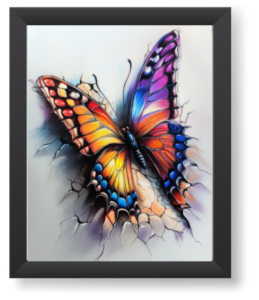
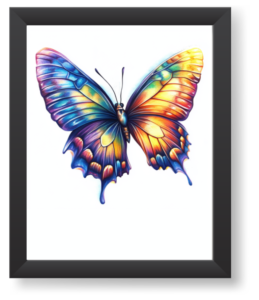
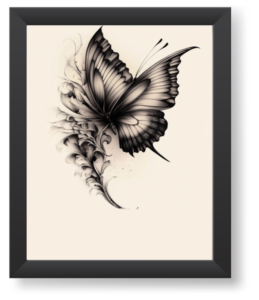
8. Expression of Joy and Celebration
- A butterfly tattoo can be celebratory by itself, but the addition of flowers adds a more joyful, festive element. Flowers, in many cultures, symbolize celebrations of life and happiness, so the combination can represent an optimistic outlook on life, marking a time of growth, happiness, or accomplishment.
9. Depth of the Artistic Composition
- From an artistic perspective, the addition of flowers adds complexity and detail to the tattoo, often making the design more visually captivating. The interplay of the butterfly’s wings with the softness of petals creates a dynamic and layered design. This can reflect a deeper or more layered personal meaning, suggesting a richer story of transformation, beauty, and growth.
10. Symbol of Harmony and Serenity
- Butterflies and flowers together often evoke a sense of harmony and peace. The image of a butterfly resting on or near flowers symbolizes serenity, natural beauty, and tranquility. This combination can reflect a desire for inner peace, calm, and living in harmony with the world and oneself.
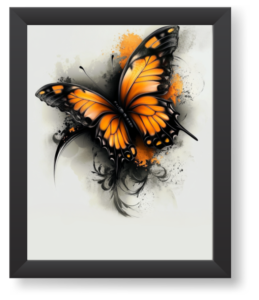

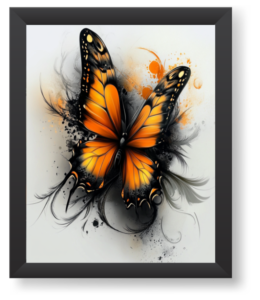
Ending
A butterfly with flowers tattoo goes beyond the symbolism of just transformation and personal growth. It adds layers of meaning related to love, femininity, nature, renewal, and the cycles of life. The specific combination of flower types and the butterfly’s appearance allows for personalized symbolism, making it a meaningful and often more intricate tattoo design than a butterfly alone.
Tattoo Design, Compass, Unlock Your True North
Compass tattoos are a timeless design that carry rich symbolism and aesthetic appeal. As one of the most iconic images in the tattoo world, compass tattoos represent direction, guidance, and exploration, both physically and metaphorically.

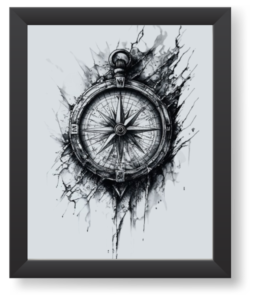
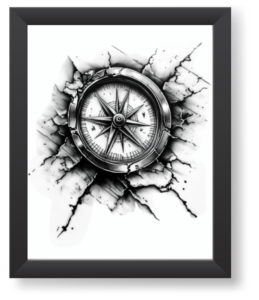
Symbolism of Compass Tattoos:
- Direction & Guidance: A compass tattoo often signifies finding one’s way or staying on the right path in life. It serves as a reminder to remain focused on personal goals or to navigate through life’s challenges.
- Adventure & Exploration: For those with a spirit of adventure, a compass tattoo can represent the desire to explore the world and seek new experiences. It can also symbolize freedom and a yearning for discovery.
- Protection & Safety: Traditionally, sailors used the compass as a tool to guide them safely across treacherous seas. As a tattoo, it can symbolize protection from getting lost, both in a literal sense and in a spiritual or emotional one.
- Personal Journey: Many people choose compass tattoos to mark a pivotal moment in their lives—whether it’s a career change, a big move, or a personal transformation. It can symbolize a “new direction” or a significant personal journey.



Design Elements and Styles:
- Classic Nautical Compass: This is often the traditional maritime-style compass, usually detailed with a circular bezel, cardinal points (N, S, E, W), and intricate embellishments. It fits perfectly with old-school or sailor-style tattooing, characterized by bold lines and solid shading.
- Geometric Compass: In this style, clean, precise lines form the compass, blending elements of geometry and symmetry. Geometric compasses can have modern, abstract looks with minimalistic designs, offering a sleek, contemporary vibe.
- Floral Compass: Integrating flowers with a compass softens the design while adding a layer of beauty and delicacy. This is popular for those looking for a balance between guidance and personal growth.
- Watercolor Compass: Adding vibrant watercolor splashes around the compass can give the design a sense of movement and fluidity. Watercolor techniques work well to emphasize the adventurous and exploratory symbolism of the compass.
- Compass with Map: A compass tattoo paired with a world map or parts of a map emphasizes the theme of travel and discovery. It also adds an element of nostalgia for those who enjoy vintage cartography.
- 3D Realistic Compass: Hyper-realistic compass tattoos are for those who appreciate intricate detail. Shading techniques can give the compass depth, making it appear as if it’s an actual object on the skin.
- Compass with Coordinates: Adding specific coordinates to the design can represent a meaningful location—such as a birthplace, a favorite travel destination, or a place that holds sentimental value. This personalizes the design while maintaining the traditional compass symbolism.
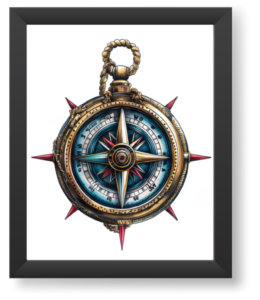
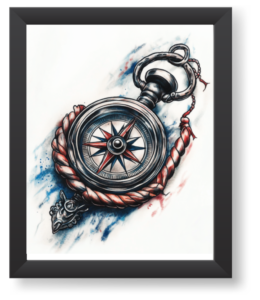
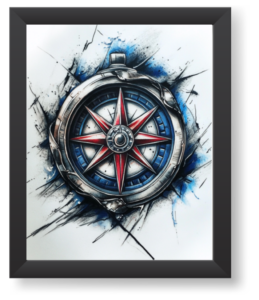
Placement Ideas:
- Forearm: A popular spot, as the shape of a compass fits nicely with the arm’s natural curvature. The forearm offers enough space for detailed work and allows the tattoo to be easily visible.
- Chest: A compass tattoo on the chest can symbolize keeping your “heart’s direction” aligned. The large area allows for detailed designs, possibly integrating other elements like maps or nautical themes.
- Upper Back or Between the Shoulder Blades: This area works well for a centered, balanced design, making the compass a focal point of the back.
- Thigh or Calf: Ideal for larger, more intricate designs. The vertical space allows for elements like a map, anchor, or other travel-related symbols.
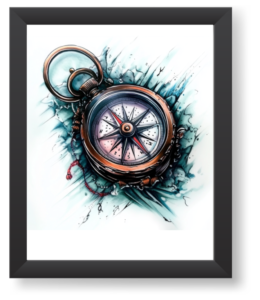

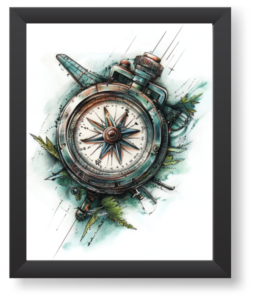
A compass tattoo offers deep personal meaning and endless design possibilities. Whether you’re drawn to its symbolism of guidance, protection, or adventure, it can be a beautifully detailed and customized piece of body art.
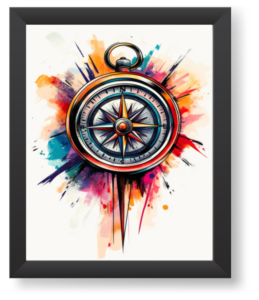
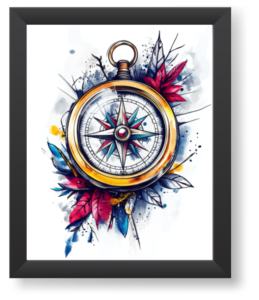
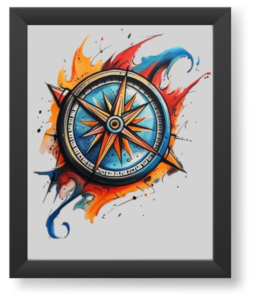
Diamond Tattoo
When approaching a diamond tattoo design there are several key considerations to keep in mind. These include the symbolism, the technical execution, and the stylistic choices that make a diamond tattoo stand out as both visually striking and meaningful.
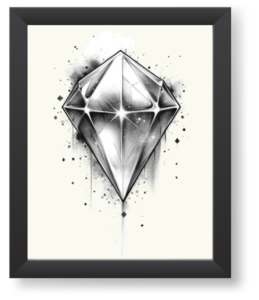
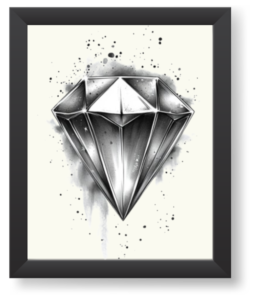
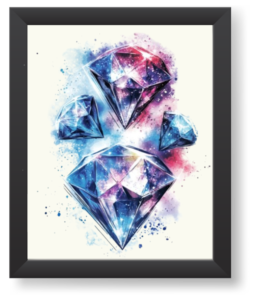
Symbolism of Diamond Tattoos
- Strength and Resilience: Diamonds are one of the hardest natural substances, symbolizing inner strength, resilience, and the ability to withstand pressure. This makes them a popular choice for clients who want their tattoos to represent personal growth or overcoming adversity.
- Luxury and Wealth: Diamonds are also associated with wealth, luxury, and opulence. A tattoo of a diamond can reflect one’s taste for the finer things in life or serve as a symbol of personal value.
- Purity and Clarity: The brilliance and clarity of a diamond can symbolize purity, transparency, and clarity of purpose. Clients might choose a diamond tattoo to signify mental or emotional clarity, or as a reminder to stay focused on their life goals.
- Eternity and Commitment: Because diamonds are often used in engagement and wedding rings, they can also represent eternal love and commitment. In this context, a diamond tattoo might be chosen as a symbol of lasting relationships.
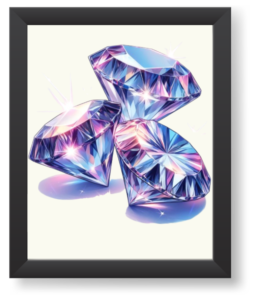
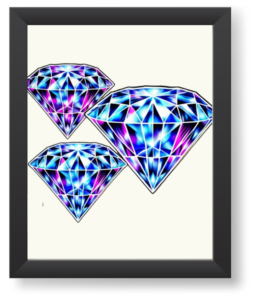
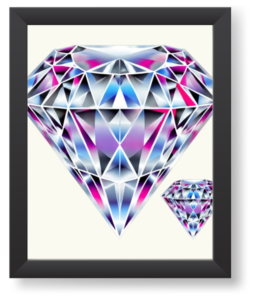
Artistic and Technical Execution
- Faceted Detailing: The key to a successful diamond tattoo lies in capturing the intricate facets that give the gemstone its iconic sparkle. As a skilled artist, mastering the geometric shapes and angles that mimic the way light reflects off a real diamond is crucial. Each facet should be sharp and well-defined, with careful attention to shading to create a 3D illusion.
- Light Reflection: The magic of a diamond tattoo comes from the interplay of light and shadow. High contrast between the darkest and lightest areas is essential for creating a realistic, almost luminous effect. Highlighting specific facets with bright white ink can give the illusion of light hitting the gemstone, while dark shading in other areas creates depth.
- Color and Gradient: While diamonds are traditionally clear, there’s a trend in tattooing to incorporate vibrant colors into the design. Soft blues, purples, and pinks are commonly used to reflect the prismatic qualities of a diamond. A gradient effect from light to dark within the facets can mimic the play of color within a gemstone and add a modern twist to a classic design.
- 3D Effect: To make the diamond tattoo truly pop, mastering the 3D effect is a must. This can be achieved by adding a soft shadow beneath the diamond, giving it a floating appearance. The depth created by shading around the base of the diamond can also enhance the illusion of a multi-dimensional gemstone sitting atop the skin.
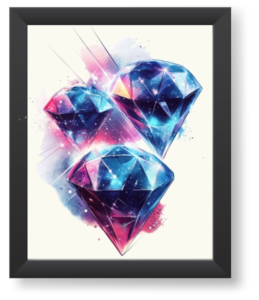
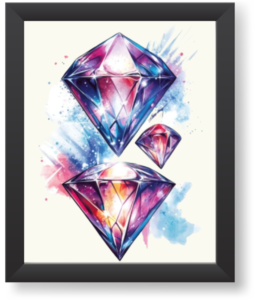
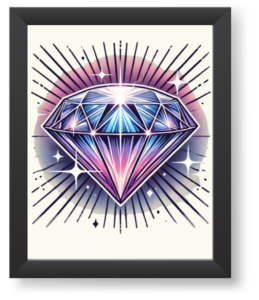
Stylistic Choices
- Hyper-realism: For clients seeking a bold statement, a hyper-realistic diamond tattoo is a show-stopper. In this style, the focus is on extreme detail, making the diamond appear as if it’s almost tangible. Every facet is meticulously rendered, with the use of white highlights and fine needlework to capture even the tiniest reflections.
- Neo-traditional: For a more stylized approach, neo-traditional diamond tattoos blend realism with bold outlines and saturated colors. The diamond remains the focal point, but the addition of elements like flowers, banners, or ornamental details can personalize the tattoo while maintaining the brilliance of the gemstone.
- Minimalism: For clients who prefer subtlety, a minimalist diamond tattoo focuses on clean lines and geometric shapes without the heavy shading or color found in more detailed styles. This approach works well for smaller tattoos or placements where a delicate design is desired.
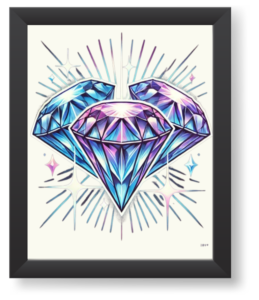
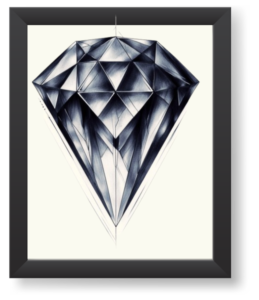
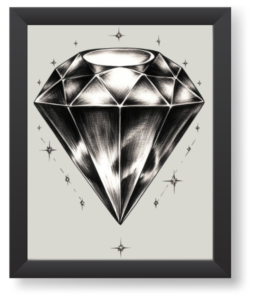
Placement Considerations
- Visibility and Size: As with any tattoo, placement is a key consideration. For larger, highly detailed diamond tattoos, areas like the forearm, upper arm, chest, or thigh offer enough space to showcase the intricacies of the design. For smaller, minimalist diamonds, more discreet placements such as the wrist, ankle, or behind the ear are popular choices.
- Flow with the Body: The placement of a diamond tattoo should also consider the flow of the body’s natural curves. For example, placing a diamond tattoo on the collarbone or ribcage allows the design to follow the contours of the body, creating a dynamic and integrated look.

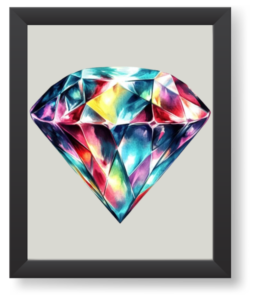
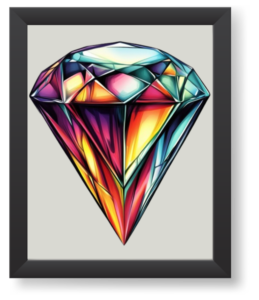
Personalization
- Element Integration: To make a diamond tattoo truly personal, consider incorporating elements that hold meaning for the client. For example, adding roses or other floral elements can symbolize beauty and growth, while combining a diamond with other symbols like a heart or anchor can convey deeper emotional significance.
- Lettering: Some clients opt to add meaningful text or dates around their diamond tattoo, further personalizing the design. The lettering should complement the angular lines of the diamond without overpowering the intricate detailing.
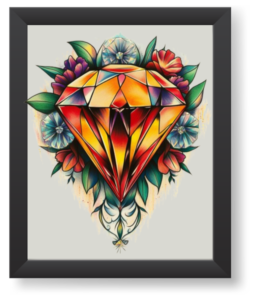
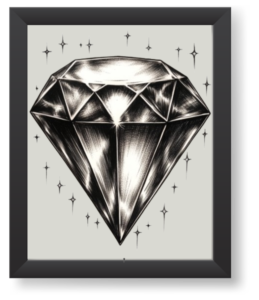
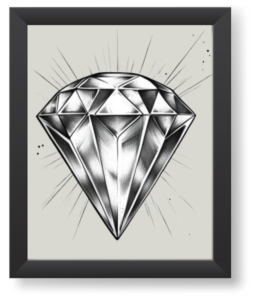
Aftercare and Longevity
- Maintaining Sharpness: Diamonds are all about sharp lines and clean edges, so proper aftercare is essential to preserve the tattoo’s crispness. As an artist, it’s important to educate clients on the importance of moisturizing and protecting the tattoo from excessive sun exposure, as this can cause fading and blurring over time.
- Touch-ups: Over time, even the best-executed tattoo may need a touch-up to maintain its vibrancy. Diamonds, with their fine lines and detailed shading, may require periodic touch-ups to ensure they remain as brilliant as the day they were inked.
epilogue
A diamond tattoo is more than just a design—it’s a powerful symbol of strength, clarity, and beauty. Whether rendered in a hyper-realistic style or with bold, stylized lines, the diamond offers endless possibilities for creativity. As a top-tier tattoo artist, the challenge lies in balancing technical precision with artistic flair, ensuring that every diamond tattoo sparkles on the skin for years to come.
Butterfly Tattoo 3D
3D butterfly tattoos are a popular choice among tattoo enthusiasts, particularly women, due to their vibrant colors and intricate designs. These tattoos are characterized by their realistic appearance, often enhanced by shading techniques that create a three-dimensional effect.
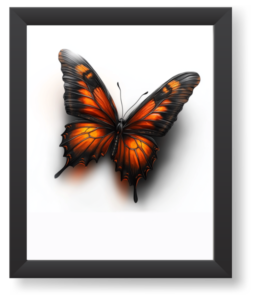
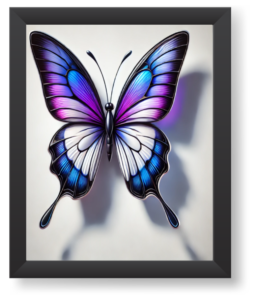
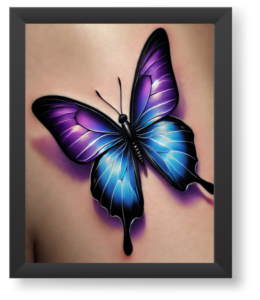
Design and Placement
3D butterfly tattoos can be designed in various styles and sizes, allowing for personalization based on individual preferences. Common placements for these tattoos include the arms, legs, and chest, where the detailed artwork can be showcased effectively. For instance, designs featuring blue butterflies with stunning shading are particularly favored for their visual impact.
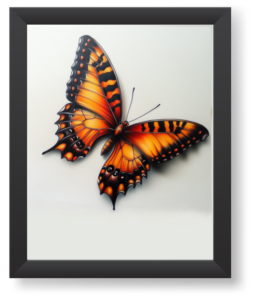

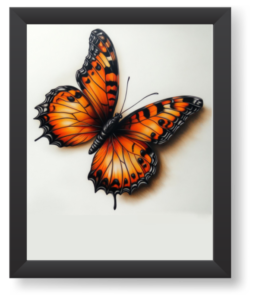
Symbolism
Butterflies generally symbolize beauty, transformation, and freedom. The 3D aspect adds an additional layer of depth to these meanings, making them even more appealing to those who choose to wear them as a form of self-expression. The realistic look of these tattoos can evoke feelings of liveliness and add a splash of color to the wearer’s appearance.

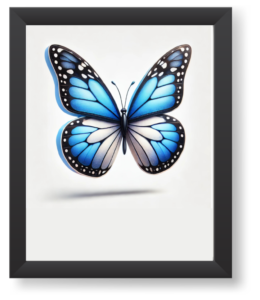
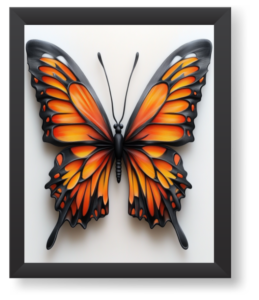
Popular Styles
Some popular styles of 3D butterfly tattoos include:
- Realistic Butterflies: These designs aim to replicate the look of real butterflies with meticulous detail.
- Colorful Variations: Many designs incorporate vibrant colors like blue, pink, and orange to enhance their aesthetic appeal.
- Abstract Designs: Some artists create unique interpretations that blend traditional butterfly imagery with abstract elements.

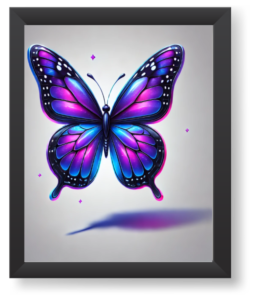
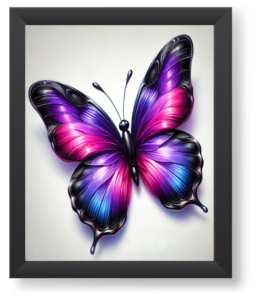
Temporary Options
For those who may not want a permanent tattoo, there are also temporary options available. These can be fun for parties or special occasions and typically last for several days. They come in various designs and are easy to apply and remove, making them accessible for all ages.
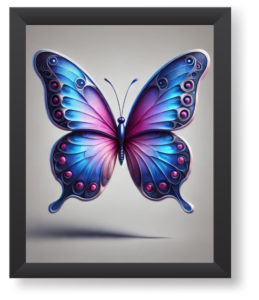
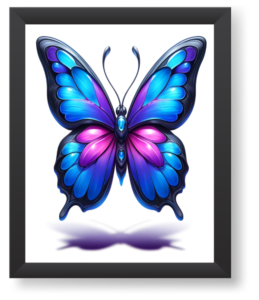
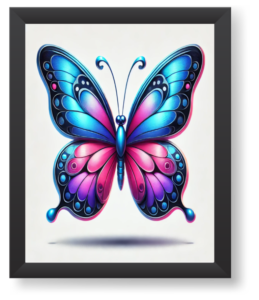
The most popular places on the body for 3D butterfly tattoos include:
1. Back
- Many individuals choose to place butterfly tattoos on their back, particularly near the shoulders or along the spine. This area allows for larger designs that can incorporate intricate details and vibrant colors, making them visually striking.
2. Arms
- The arms are a favored location for butterfly tattoos, allowing for visibility while also being easy to cover if desired. Designs can range from small, delicate butterflies on the forearm to larger, more elaborate pieces that wrap around the arm.
3. Legs
- Butterfly tattoos on the legs, especially on the thighs or calves, are popular for their aesthetic appeal. This placement can highlight the natural curves of the body and is often chosen for more colorful and dynamic designs.
4. Chest
- The chest area is another common spot, often selected for its prominence and ability to showcase detailed artwork. Butterfly tattoos here can symbolize personal transformation and beauty.
5. Wrist and Ankle
- Smaller butterfly tattoos are frequently placed on the wrist or ankle, providing a subtle yet elegant look. These locations are ideal for those who prefer minimalist designs or want something easily concealable.
Overall, the choice of placement often depends on personal preference, the size of the tattoo, and the desired visibility.
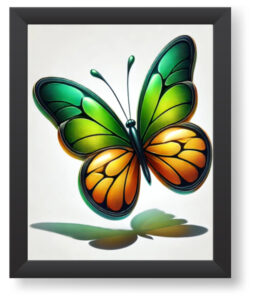
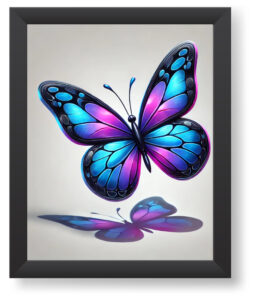
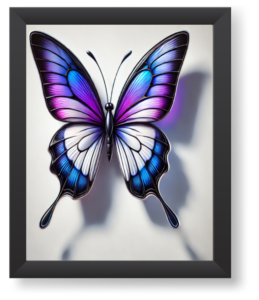
In conclusion, 3D butterfly tattoos are not only visually striking but also carry significant symbolic meaning, making them a favored choice among tattoo lovers.
Butterfly Tattoo with Flowers
A butterfly tattoo with flowers is a popular design choice that combines the beauty and symbolism of butterflies with the elegance of floral elements. Here’s a breakdown of its meaning and visual aspects:
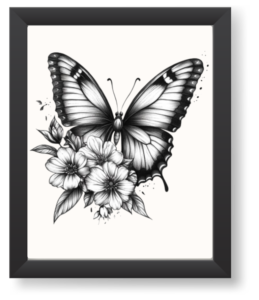
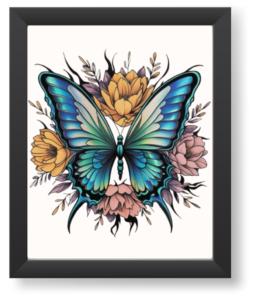
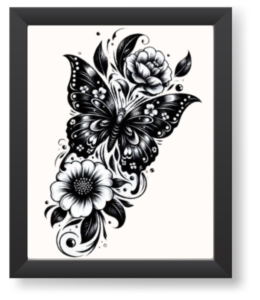
Symbolism:
- Butterfly:
- Transformation and Rebirth: Butterflies are often associated with personal growth, change, and metamorphosis, reflecting the stages of life and the emergence of beauty from struggle.
- Freedom and New Beginnings: The butterfly’s ability to fly freely symbolizes liberation and fresh starts.
- Delicacy and Grace: Butterflies are delicate creatures, representing grace, femininity, and a gentle spirit.
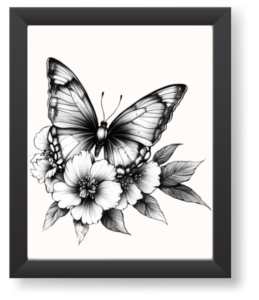
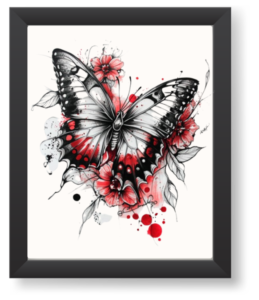
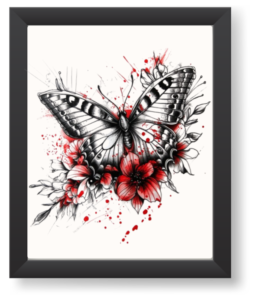
Flowers:
- Beauty and Nature: Flowers, especially when incorporated with butterflies, symbolize the beauty and harmony of nature.
- Growth and Life: Flowers are often used to symbolize growth, vitality, and the cycles of life, much like the butterfly’s transformative nature.
- Love and Femininity: Certain flowers, like roses, can symbolize love, while other blooms may carry different meanings (e.g., cherry blossoms for fleeting beauty, lilies for purity, etc.).
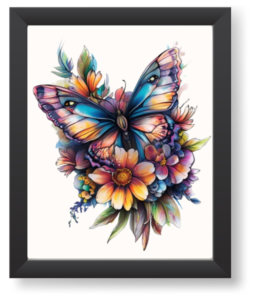
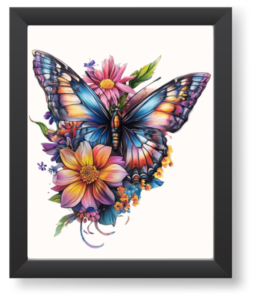
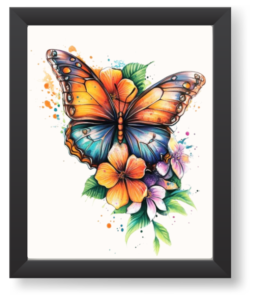
Design Elements:
- Placement: Butterfly and flower tattoos can be placed almost anywhere on the body, but common areas include the shoulder, back, arm, or ankle.
- Color: Vibrant colors are often used for both the butterfly and the flowers, reflecting their natural beauty. The butterfly may feature intricate wing patterns, while the flowers may range from roses to daisies, depending on the desired symbolism.
- Style: These tattoos can vary in style, from realistic depictions to abstract or watercolor effects. They can also be designed in black ink with detailed shading for a more minimalist, classic look.
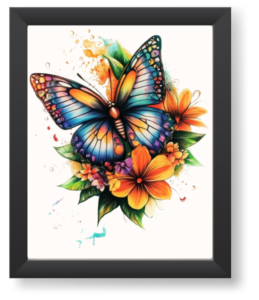
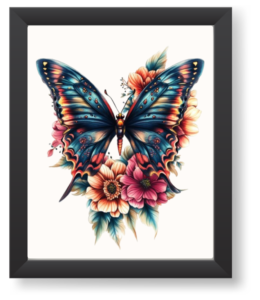
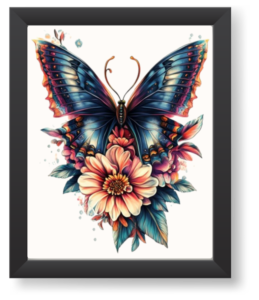
Popular Variations:
- Butterfly resting on a flower: This is a classic representation of the connection between the two symbols.
- Surrounding floral patterns: The butterfly may be framed or surrounded by floral patterns, creating a dynamic, flowing design that wraps around the body.
- Butterfly wings with floral motifs: In some designs, the butterfly’s wings are made up of floral patterns, merging the two elements into a single symbolic entity.
This combination is popular for its aesthetic appeal as well as its rich symbolic undertones, often chosen by those looking to reflect personal growth, change, or a love for nature.
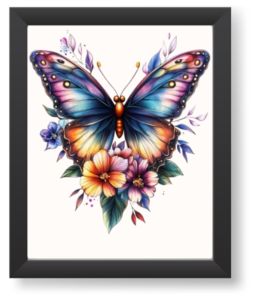
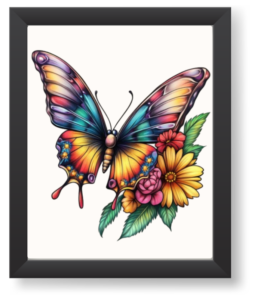
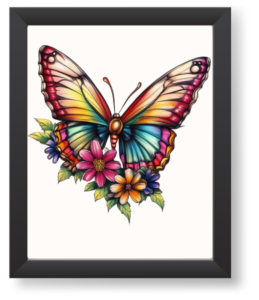
Placement Consideration
When deciding on the placement of a butterfly tattoo with flowers, several factors should be considered to ensure that the design complements both the chosen area of the body and the individual’s personal preferences. Here are some key placement considerations:
1. Size of the Tattoo
- Large Designs: If you envision a larger, more detailed design, areas like the back, thigh, upper arm, or side of the ribs offer plenty of space to incorporate both the butterfly and intricate floral elements.
- Smaller Designs: For smaller, more delicate designs, areas like the wrist, ankle, shoulder, or behind the ear are suitable for a subtler display of the tattoo.
2. Visibility
- High Visibility: If you want your tattoo to be visible most of the time, consider areas like the forearm, wrist, neck, or upper chest. These placements allow for the tattoo to be easily seen, which may be ideal for those who want their butterfly and flowers to be a personal or aesthetic statement.
- Low Visibility: If you prefer a more private or hidden tattoo, locations like the back, ribs, hips, thighs, or behind the ear offer a discreet option. These areas can be covered easily with clothing, providing the option to reveal the tattoo only when desired.
3. Body Shape and Curvature
- Curved Areas: Designs can be made to flow with the natural curves of the body. For example, a butterfly and floral design along the spine, ribs, or hip can emphasize the curves and create a dynamic, elongated look. Tattoos on the shoulder blades or chest can similarly align with the body’s natural shape.
- Flat Areas: Flat surfaces like the back, thigh, or calf provide a perfect canvas for more intricate, detailed designs, allowing the tattoo to maintain its clarity and precision.
4. Pain Sensitivity
- Less Painful Areas: If pain is a concern, areas with more flesh and muscle like the upper arm, thigh, shoulders, or calves tend to be less painful. These areas allow for a more comfortable tattooing experience, especially for larger designs.
- More Painful Areas: Areas with thinner skin or more bone, such as the ribs, ankles, wrists, spine, and behind the ear, can be more painful due to the lack of cushioning. However, these areas are popular for their aesthetic appeal and can create a striking visual impact.
5. Aging and Movement
- Static Areas: Consider areas of the body that are less likely to change significantly over time, especially if you want the tattoo to retain its original clarity. The upper back, thighs, and forearms generally experience less stretching or movement as the body ages.
- Dynamic Areas: Locations like the stomach, hips, chest, and inner arms may experience stretching over time, especially due to weight changes or aging. If you’re concerned about how the tattoo will age, choosing a more static area may be preferable.
6. Symmetry and Balance
- If your design is symmetrical (e.g., a butterfly with flowers on either side), consider central placements such as the spine, chest, or upper back. Symmetrical designs often look balanced and harmonious when placed in the center of the body.
- For asymmetrical designs, the tattoo can be placed to follow the contours of a particular area, such as along the collarbone, thigh, or side of the body, creating a more fluid, artistic appearance.
7. Design Flow and Movement
- For designs that are meant to look dynamic, such as a butterfly in flight surrounded by flowers, choosing a location where the design can “flow” across the body (e.g., side of the ribs, arm, or leg) can enhance the sense of motion and energy.
8. Tattoo Expansion
- If you think you might want to expand the design later (e.g., adding more flowers or other elements), choose an area with enough space to accommodate future additions. Areas like the back, arms, and thighs offer flexibility for building on your original design.
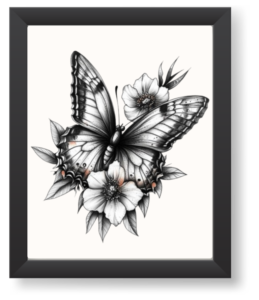
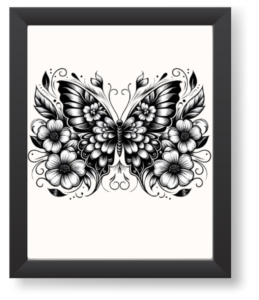
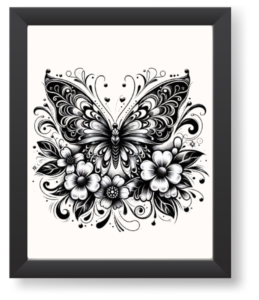
The ideal placement for a butterfly tattoo with flowers depends on a combination of personal aesthetic preferences, comfort with visibility, and how the tattoo will align with the body’s shape and movement. Carefully considering these factors will help ensure that the tattoo not only looks beautiful but also ages well and fits your lifestyle.
Flowers Tattoo Design
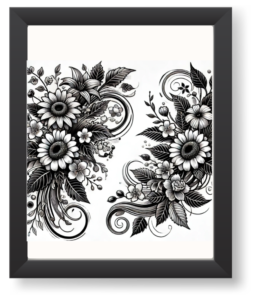
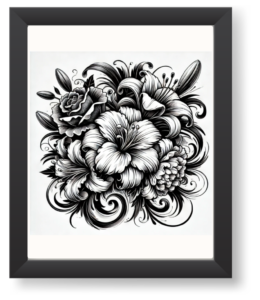
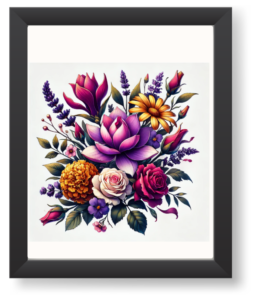
Flowers tattoo designs are popular for their versatility, symbolism, and aesthetic appeal. Each flower type carries unique meanings and can be customized in various styles, making them suitable for different tattoo preferences, from minimalistic to highly detailed and colorful designs. Here’s a closer look at flower tattoo designs:
Common Flower Types and Their Meanings
-
Roses: Represent love, passion, and beauty. They can symbolize different emotions depending on the color; red roses are for love, black for loss or rebellion, and white for purity.

-
Lotus: Symbolizes spiritual awakening, purity, and enlightenment. It is often associated with Eastern philosophies and religions, such as Buddhism and Hinduism.
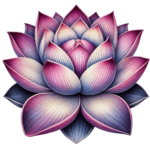
-
Peonies: Represent prosperity, honor, and good fortune. They are known for their lush, full blooms and are often used in traditional Japanese tattoo art.
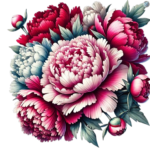
-
Lilies: Symbolize purity, renewal, and transience. Different types, like the tiger lily, can represent wealth and pride.
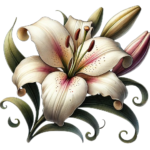
-
Cherry Blossoms: Signify the fleeting nature of life and beauty, popular in Japanese culture, and often associated with themes of mortality and appreciation of the present.
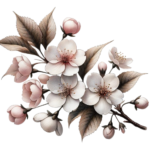
-
Sunflowers: Represent positivity, warmth, and loyalty. Their bright appearance makes them a symbol of happiness and optimism.
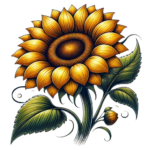
-
Daisies: Symbolize innocence, purity, and new beginnings. They are often associated with simplicity and youth.

-
Orchids: Represent beauty, strength, and luxury. They are known for their exotic and delicate appearance.
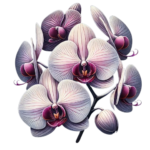
Styles of Flower Tattoos
- Realistic: Focuses on detailed and lifelike representations, capturing the texture, shading, and nuances of real flowers.
- Black and White: Often used for a more subtle, elegant look with intricate line work and shading without color.
- Watercolor: A style that mimics the look of watercolor paintings, featuring soft, blended colors and often lacking bold outlines.
- Minimalistic: Simple lines, often without shading or color, perfect for smaller, delicate tattoos.
- Traditional: Uses bold lines and solid colors, often with stylized, iconic representations of flowers.
- Geometric: Combines floral elements with geometric shapes, adding a modern and abstract twist.
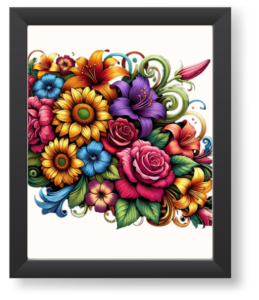
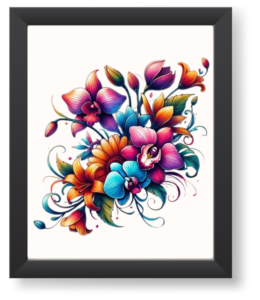
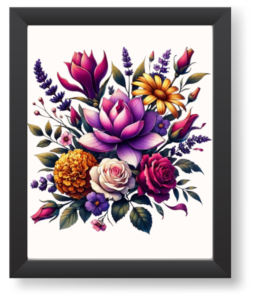
Symbolic and Aesthetic Choices
Choosing a flower tattoo often reflects personal symbolism, such as honoring a loved one, celebrating a new beginning, or representing specific personal traits. The aesthetic choice also plays a role, from a single delicate flower to complex arrangements combined with other elements like butterflies, vines, or abstract designs. Flower tattoos are not just about beauty; they hold layers of meaning, making them a timeless and deeply personal choice for body art.
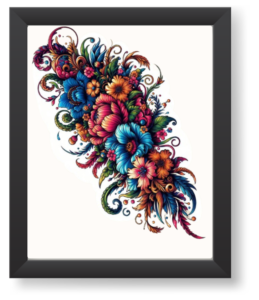
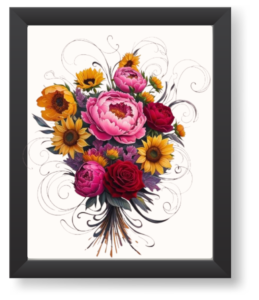
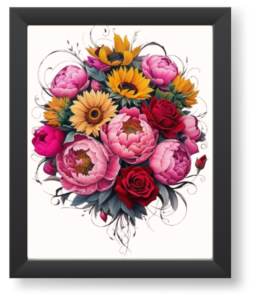
Most Popular Flowers Tattoo Designs Requested
Flower tattoos are chosen for their aesthetic beauty and deep meanings. Here are the most commonly requested flower tattoos:
Roses
- Symbolism: In addition, roses also represent strength.
- Why Popular: The rose is one of the most classic flower tattoo designs, offering endless variations in design and color. It’s incredibly versatile, with pink symbolizing grace, admiration, gratitude, and joy. Yellow symbolizing friendship, happiness, and warmth.
- Stylistic Variations: Traditional, realistic, or geometric.
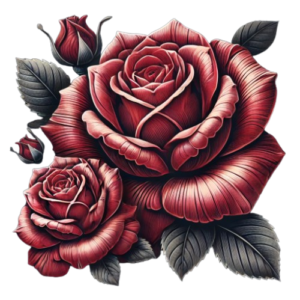
Lotus
- Symbolism: Rebirth.
- Why Popular: The lotus represents overcoming hardship and spiritual growth, making it a powerful and deeply meaningful tattoo.
- Stylistic Variations: Watercolor, mandala, or linework.
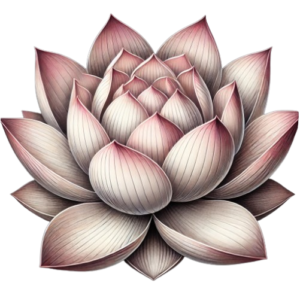
Cherry Blossoms
- Symbolism: The fleeting nature of life, beauty, and renewal.
- Why Popular: Widely used in Japanese tattoo art (Irezumi), cherry blossoms are delicate and beautiful. They’re often combined with other elements like koi fish or samurai.
- Stylistic Variations: Realistic, watercolor, or minimalistic.
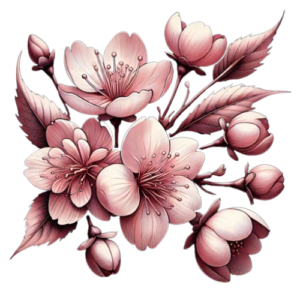
Sunflowers
- Symbolism: Happiness, optimism.
- Why Popular: With their bright, bold appearance, sunflowers warmth. They’re often chosen for their sunny aesthetic and are great for large, vibrant tattoo designs.
- Stylistic Variations: Realistic, abstract, or traditional.

Hibiscus
- Symbolism: Delicate beauty, femininity, and relaxation.
- Why Popular: Often associated with tropical destinations and island life, hibiscus tattoos are vibrant and striking, making them a favorite among those seeking bold, colorful designs.
- Stylistic Variations: Realistic, traditional, or watercolor.
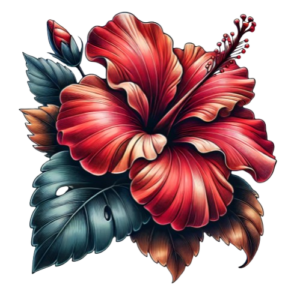
Peonies
- Symbolism: In addition to prosperity, Peonies symbolizes romance.
- Why Popular: Known for their large, lush blooms, peonies are popular in both traditional and Japanese tattoo styles. They are often associated with good fortune and can be designed with intricate details and vibrant colors.
- Stylistic Variations: Traditional Japanese, realistic, or neo-traditional.
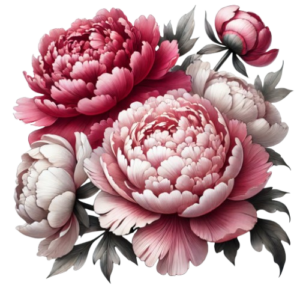
Daisies
- Symbolism: Daisies symbolize a variety of positive meanings, often related to simplicity.
- Why Popular: Daisies are simple yet charming, often associated with youth and playfulness. Their clean lines and minimalist style make them popular for smaller tattoos or subtle designs.
- Stylistic Variations: Minimalist, linework, or watercolor.

Lilies
- Symbolism: Femininity.
- Why Popular: Lilies are elegant and delicate, often symbolizing purity. White lilies are particularly popular for their association with innocence.
- Stylistic Variations: Realistic, geometric, or illustrative.
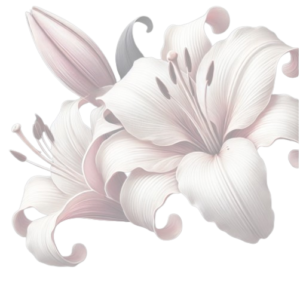
Poppies
- Symbolism: Remembrance, peace, and eternal sleep.
- Why Popular: Poppies have a deep association with memory and loss, often chosen for remembrance tattoos. Their vivid red color makes them a striking choice for both small and large designs.
- Stylistic Variations: Realistic, illustrative, or neo-traditional.
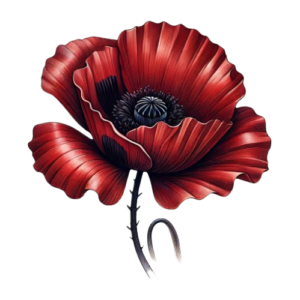
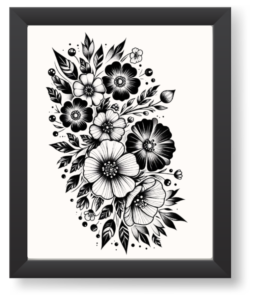

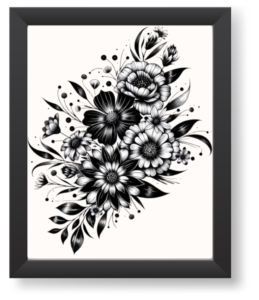
Choosing The Right Flower Tattoo For You
Choosing the right flower tattoo involves considering personal meaning, aesthetic preferences, symbolism, and how the design fits with your body and style. Here’s a step-by-step guide to help you make the best decision:
1. Consider the Symbolism
Each flower carries its own meaning, so think about what you want your tattoo to represent. Here is a recap on symbolism:
- Roses: Love, passion, beauty.
- Lotus: Spiritual awakening, purity, enlightenment.
- Peonies: Prosperity, honor, good fortune.
- Cherry Blossoms: The fleeting nature of life, renewal.
- Sunflowers: Positivity, warmth, loyalty.
- Daisies: Innocence, purity, new beginnings.
- Orchids: Beauty, strength, luxury.
- Lilies: Purity, femininity, renewal.
Choose a flower that resonates with your personal story, values, or emotions.
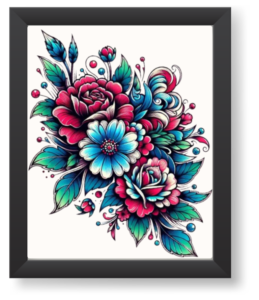
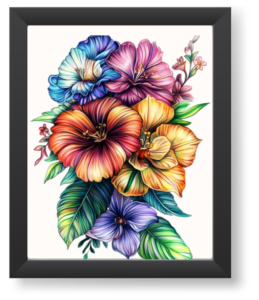
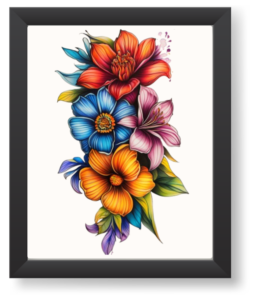
2. Think About the Aesthetic
Your tattoo’s style is just as important as its symbolism. Different flower designs can evoke different feelings, depending on how they’re executed. Some popular styles include:
- Realistic: Highly detailed and lifelike, capturing the natural beauty of the flower.
- Minimalist: Simple line work and clean designs for a more understated look.
- Watercolor: Soft, blended colors without bold outlines for a more artistic, painterly effect.
- Geometric: Combining floral designs with geometric shapes for a modern, abstract look.
- Traditional: Bold outlines and vibrant colors, typically in the style of classic tattoos.
3. Choose the Placement
The placement of your tattoo can influence the design and size of the flower. Popular spots for flower tattoos include:
- Small Flowers designs: Wrist, ankle, behind the ear, on the foot, or along the collarbone.
- Larger, intricate Arrangement designs: Back, thigh, shoulder, arm sleeves, or chest for a more prominent display.
- Sleeves: A combination of different flowers arranged in a full or half-sleeve design..
Make sure to consider how the flower’s shape will fit the contours of your body.
4. Size Matters
- Small tattoos: Often minimalistic and delicate, suitable for areas like the wrist or ankle.
- Large tattoos: Perfect for bold designs with intricate details, suitable for back, thigh, or arm sleeves.
Consider whether you want a discreet piece or something more prominent.
5. Colors vs. Black and White
- Colored tattoos: Vibrant colors like reds, yellows, and pinks can make flowers like roses or sunflowers stand out.
- Black and white: Classic, elegant, and timeless. If you prefer a more subtle or sophisticated look, black and white can enhance the design’s fine details.
6. Personal Connection
Sometimes the right flower tattoo is simply one that you feel a connection to. Perhaps it reminds you of a loved one, a significant memory, or a place you love.
7. Consult a Professional Artist
- Collaborate with your tattoo artist: Once you have a general idea of what you want, talk to your tattoo artist. A good artist will help bring your vision to life, offer suggestions, and ensure the design fits well with your body and style.
8. Look at Tattoo Portfolios
Browse through artists’ portfolios for inspiration. Pay attention to how they interpret flowers and see if their style resonates with what you want.
9. Longevity
Some tattoo styles age better than others. Bold lines and shading tend to hold up over time, while very delicate or fine-line designs might fade more quickly.
By combining symbolism, style, placement, and personal meaning, you can choose a flower tattoo that not only looks beautiful but also holds deep significance for you.
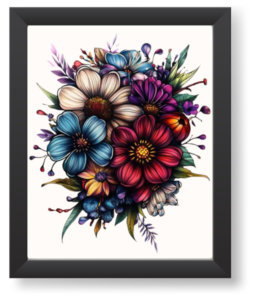

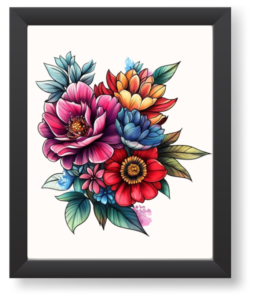
Floral Ink Inspirations
Symbolism, Styles, & Perfect Placement For Flower Tattoos | ||||
Flower | Symbolism | Placement | Styles | |
Rose | Love, Passion, Beauty, Balance | Shoulder, Forearm, Chest | Traditional, Realism, Watercolor | |
Lotus | Purity, Enlightenment, Rebirth | Back, Wrist, Ankle | Geometric, Dotwork, Black and Grey | |
Cherry Blossom | Life’s Beauty, Fragility, Renewal | Collarbone, Back, Thigh | Japanese, Minimalist, Watercolor | |
Sunflower | Positivity, Joy, Loyalty | Shoulder, Calf, Wrist | Neo-Traditional, Realism, Watercolor | |
Daisy | Innocence, New Beginnings, Peace | Shoulder Blade, Ankle | Minimalist, Line Art, Black and Grey | |
Peony | Prosperity, Good Fortune, Honor | Shoulder, Hip, Arm | Japanese, Traditional, Realism | |
Lily | Purity, Motherhood, Renewal | Side Rib, Back, Thigh | Realism, Fine Line, Watercolor | |
Orchid | Beauty, Strength, Luxury | Neck, Hip, Wrist | Realism, Line Art, Black and Grey | |
Hibiscus | Delicate Beauty, Tropical Vibes, Femininity | Shoulder, Forearm, Ankle | Realism, Watercolor, Polynesian | |
Lavender | Calmness, Healing, Devotion | Inner Arm, Ankle, Neck | Fine Line, Minimalist, Black and Grey | |
Magnolia | Notability, Perseverance, Dignity | Ribcage, Inner Arm, Thigh | Watercolor, Realism, Traditional | |
Iris | Wisdom, Faith, Hope | Forearm, Calf, Shoulder | Realism, FIne Line, Black and Grey | |
Violet | Humility, Modesty, Loyalty | Wrist, Ankle, Neck | Minimalist, Realism, Black and Grey | |
Poppy | Remembrance, Sleep, Peace | Back, Chest, Forearm | Neo-Traditional, Blackwork, Realism | |
Jasmine | Love, Sensuality, Purity | Collarbone, Wrist, Ankle | Minimalist, Realism, Watercolor | |
Tulip | Love, Fame, Wealth | Arm, Thigh, Calf | Realism, FIne Line, Traditional | |
Daffodil | Rebirth, New Beginnings, Inspiration | Ankle, Shoulder, Wrist | Realism, Line Art, Watercolor | |
Marigold | Creativity, Passion, Warmth | Hand, Forearm, Shoulder | Neo-Traditional, Traditional, Watercolor | |
Carnation | Love, Fascination, Distinction | Chest, Hip, Forearm | Realism, Black and Grey, Neo-Traditional | |
Angel For Tattoo, Discover the Divine

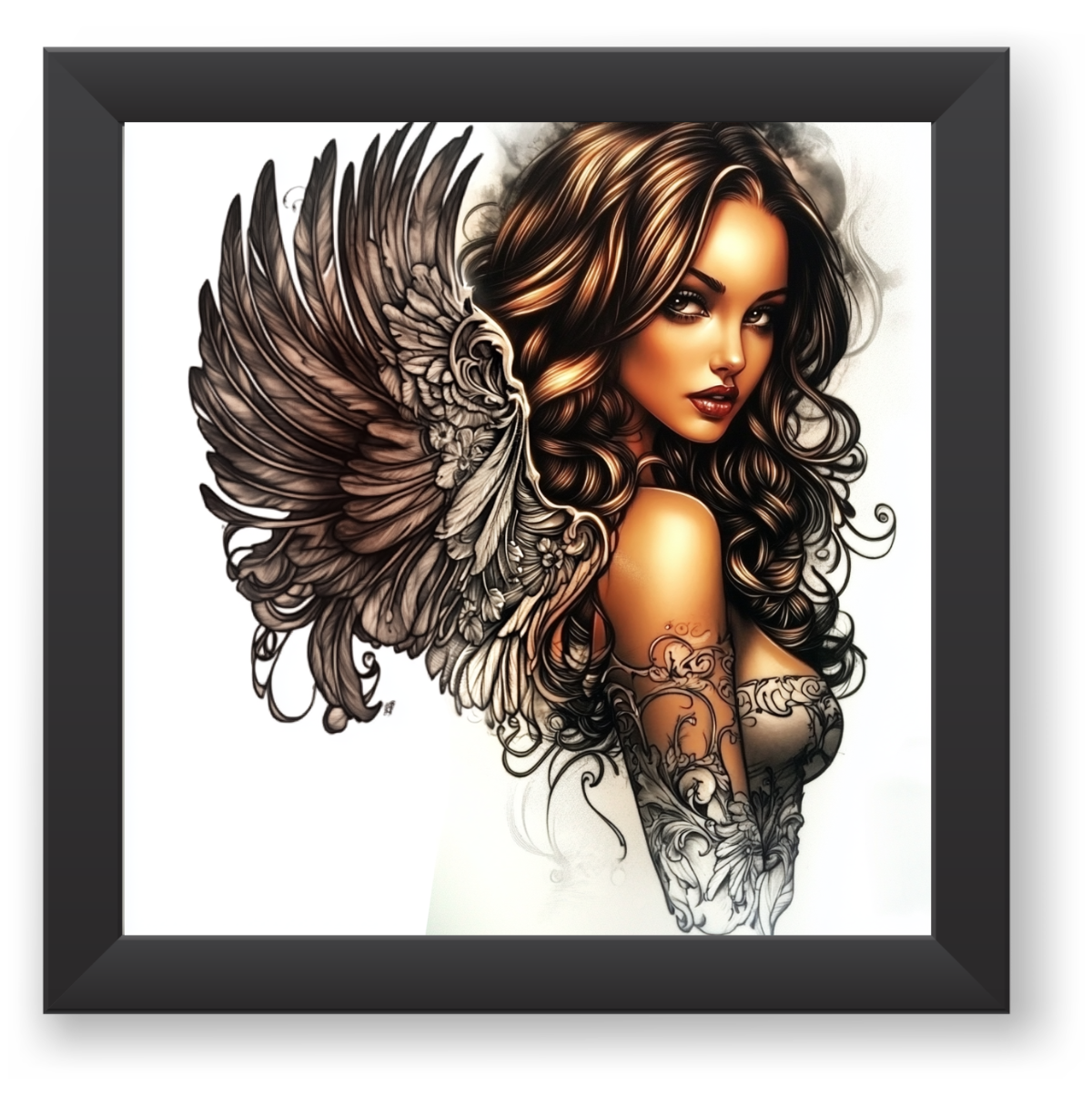
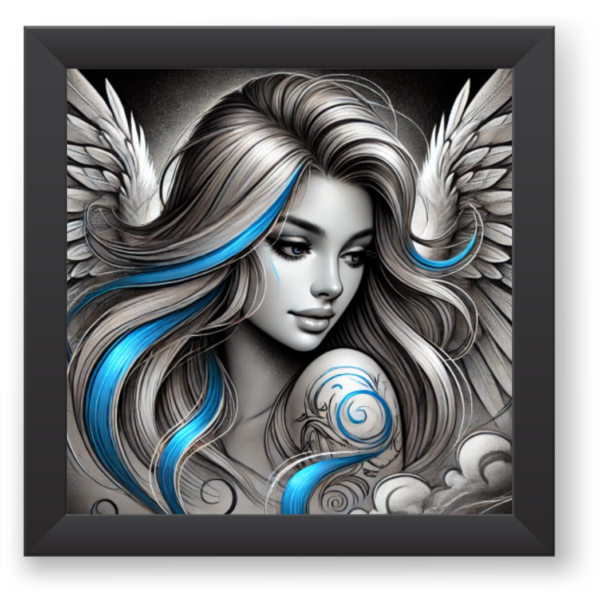
Angels are one of the most popular motifs in tattoo designs, symbolizing a wide range of themes such as spirituality, protection, guidance, purity, and faith. They are both beautiful and deeply symbolic, offering a wide range of styles and meanings to suit the wearer’s personal beliefs, emotions, or life experiences.
When a client goes to a tattoo artist with the idea of getting an angel tattoo, they could see it as an opportunity to create something both visually stunning and deeply meaningful. Angel tattoos are versatile and carry significant personal symbolism, making them a popular and timeless choice. Your tattoo artist most likely considers.

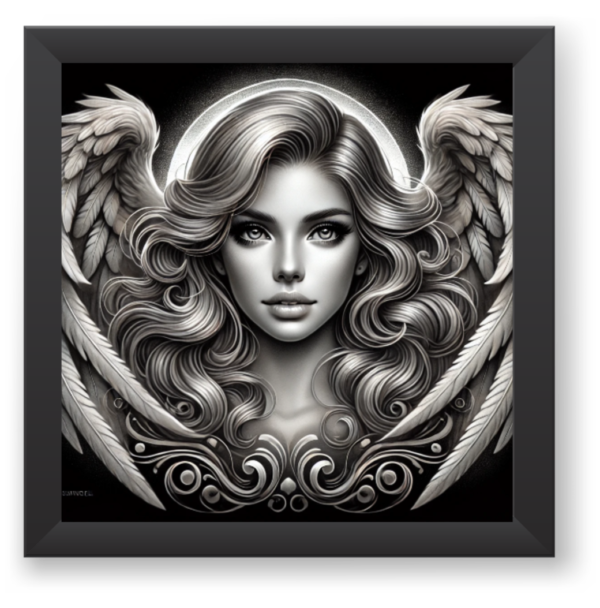
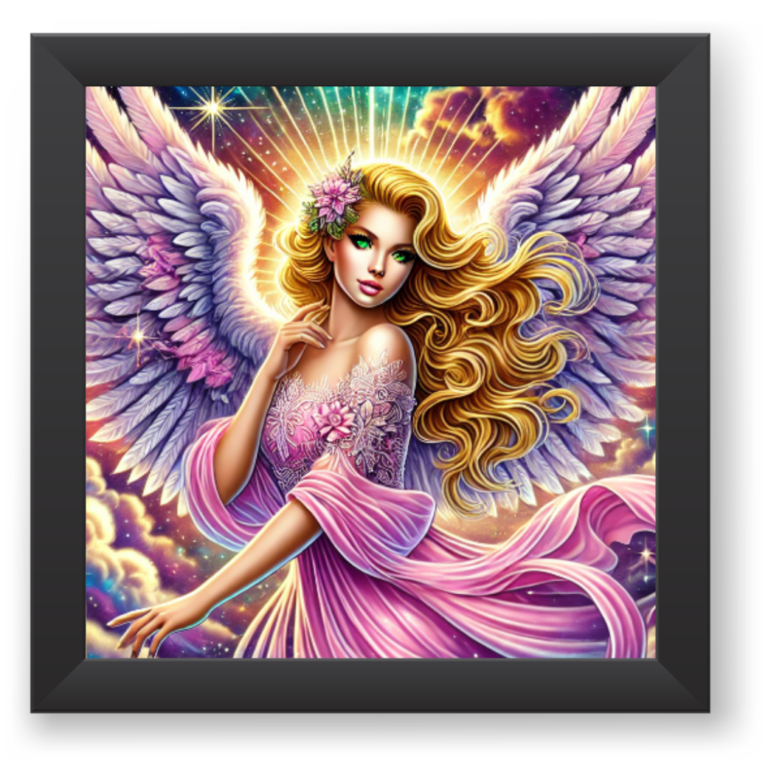
Personal Meaning and Symbolism
An angel tattoo holds a profound connection to spirituality, protection, or the memory of a loved one, for those who have one. Your tattooist will take time to understand the personal interpretation of the angel you want to depict. Whether it’s a guardian angel, a memorial piece, or a symbol of inner peace, it’s crucial that the design reflects your intention. The beauty of an angel tattoo is that it can blend religious, emotional, and aesthetic values, all in one design.
Symbolism of Angels in Tattoos
- Protection: Angels are often depicted as guardians, watching over loved ones. A guardian angel tattoo can symbolize protection and safety, serving as a reminder that the wearer feels shielded by divine forces.
- Spirituality and Faith: For many, angel tattoos are a representation of faith, spiritual beliefs, or a connection to the divine. The design may reflect the wearer’s religious devotion or a deep connection with higher powers.
- Love and Devotion: Angels can symbolize love, devotion, and caring, making them a popular choice for tattoos dedicated to loved ones, including family members, friends, or romantic partners.
- Remembrance: Memorial tattoos often incorporate angels, representing the belief that a deceased loved one has ascended to heaven. The angel can symbolize eternal life, guiding the soul to peace.
- Hope and Guidance: Angels are associated with hope, guidance, and strength. They can symbolize a sense of direction or support during difficult times.
- Rebellion and Fallen Angels: Some angel tattoos depict fallen angels or angels in conflict, representing themes of rebellion, inner turmoil, or the battle between good and evil. These tattoos often have darker, more complex meanings.
- Purity and Innocence: Angels can symbolize purity, innocence, and grace. These tattoos are often depicted with soft lines, light shading, and a serene appearance, reflecting the angelic nature of purity and beauty.
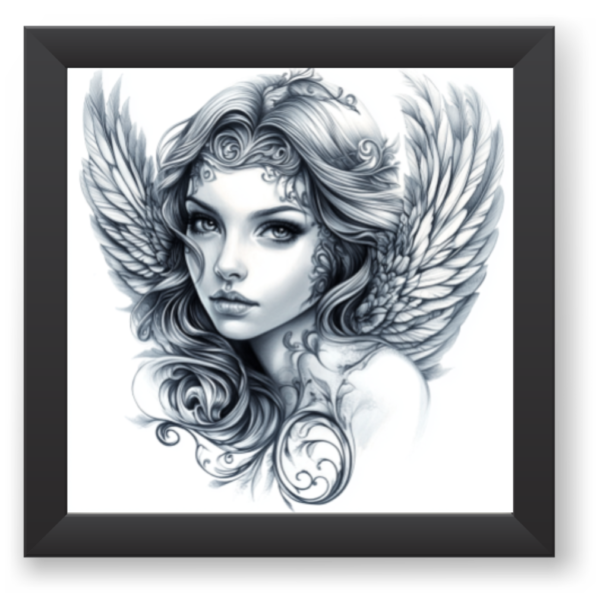
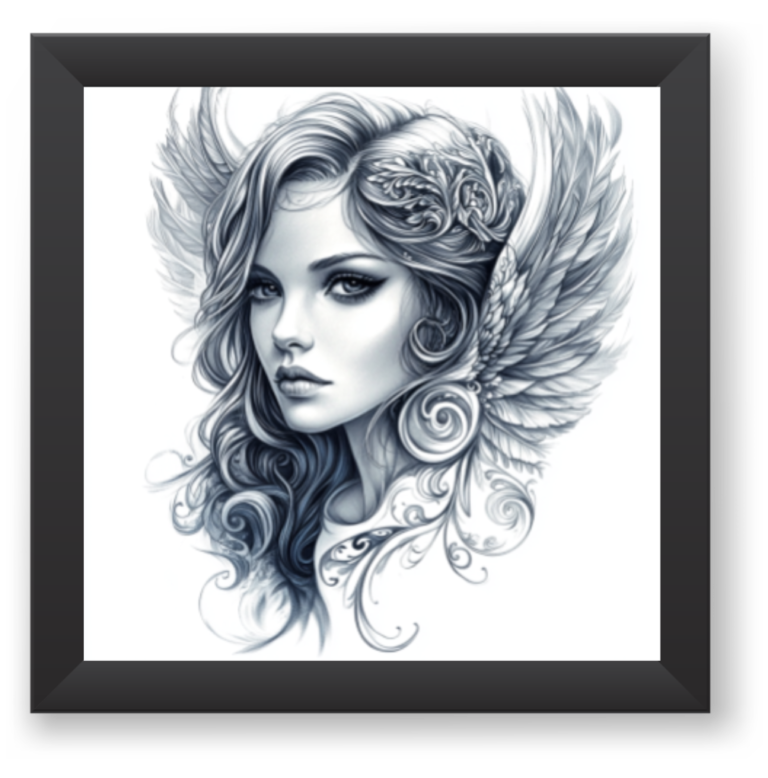
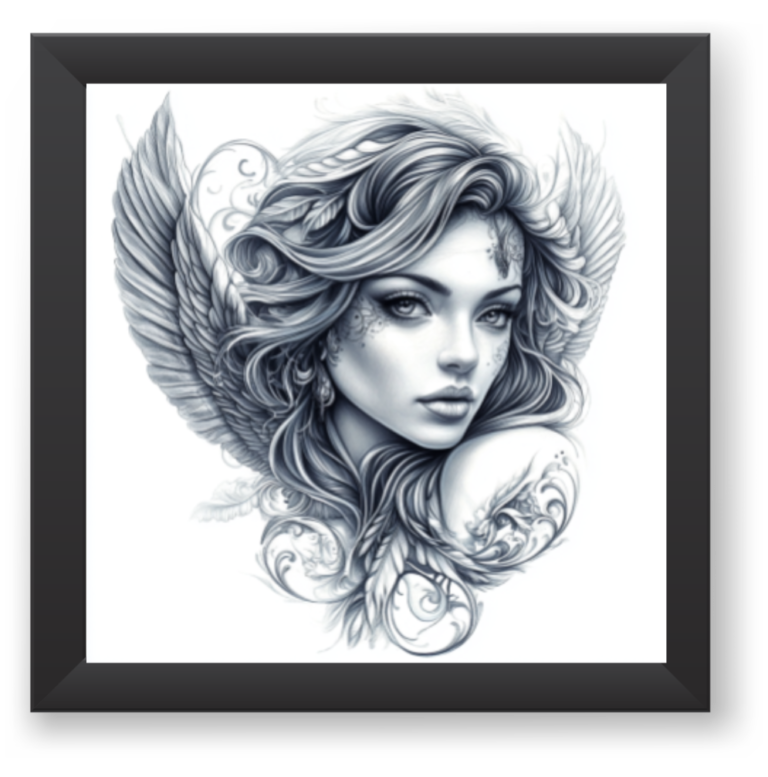
Style and Aesthetic Balance
Angel tattoos offer an incredible range of artistic possibilities. From hyper-realistic designs to softer, more abstract interpretations, the style chosen greatly affects the mood and message of the tattoo.
- For a guardian angel, a classic, detailed design with flowing robes and large, dramatic wings to evoke a sense of protection and grace could be suggested.
- For a fallen angel or an angel in conflict, introducing darker tones, broken wings, and a more intense, emotional expression to capture the internal struggle or transformation is just one suggestion.
- Pin-up angels are a great fusion of classic beauty with spiritual symbolism, blending glamour with grace, giving it a vintage yet divine feel.
The style can make the angel appear fierce, serene, sorrowful, or hopeful depending on the client’s preference. This balance between aesthetic appeal and personal meaning is one of the most rewarding challenges of tattooing angels.
Popular Styles of Angel Tattoos
- Realistic Angels: Tattoos that feature lifelike representations of angels, with intricate shading, attention to detail, and a focus on the beauty of the angel’s face and wings. These are often full-body or bust images, creating a more dramatic effect.
- Pin-up Angels: Combining classic pin-up style with angelic features, these tattoos feature glamorous, often feminine figures with wings. They’re popular for those who want a mix of traditional beauty and divine imagery.
- Guardian Angels: These often show an angel with a protective pose, arms spread or wings extended, watching over the wearer. Guardian angel tattoos may be highly detailed, with attention to the figure’s strength and grace.
- Cherubs: These child-like angels represent innocence and playfulness. Cherub tattoos are often smaller, making them ideal for subtle, charming designs.
- Fallen Angels: Fallen angels, often depicted with broken wings or dark, brooding expressions, symbolize rebellion, inner struggles, or personal transformation. This style can use heavier shading and darker tones to convey a more dramatic or sorrowful mood.
- Angel Wings: Some people choose to tattoo just the wings, which can cover large areas like the back or shoulders. Angel wing tattoos are versatile and can represent freedom, ascension, or a connection to the divine.
- Angels in Religious Context: Religious angel tattoos may feature additional imagery like crosses, halos, or scenes from religious texts. They often reflect the wearer’s faith and devotion to a higher power.
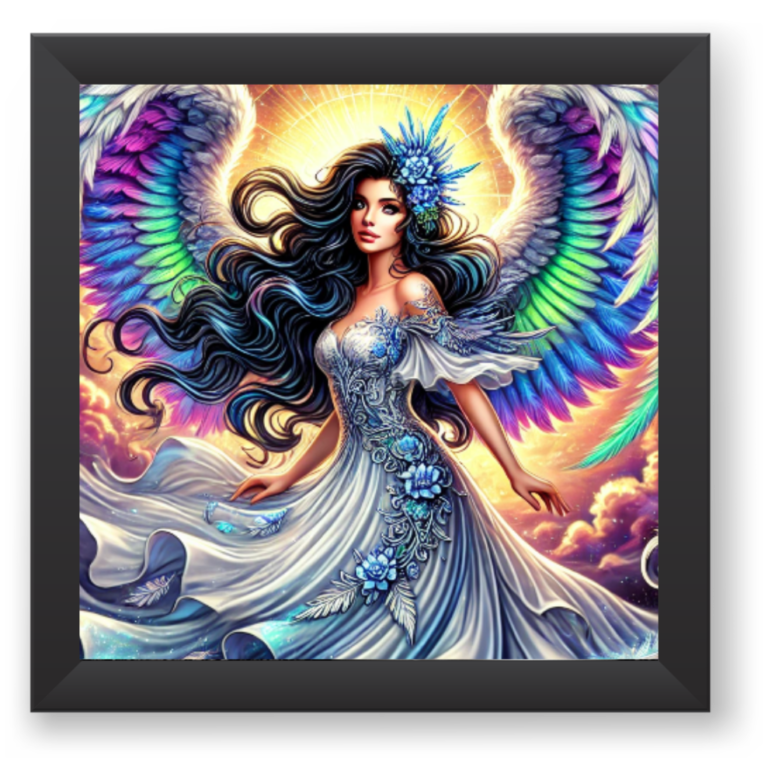
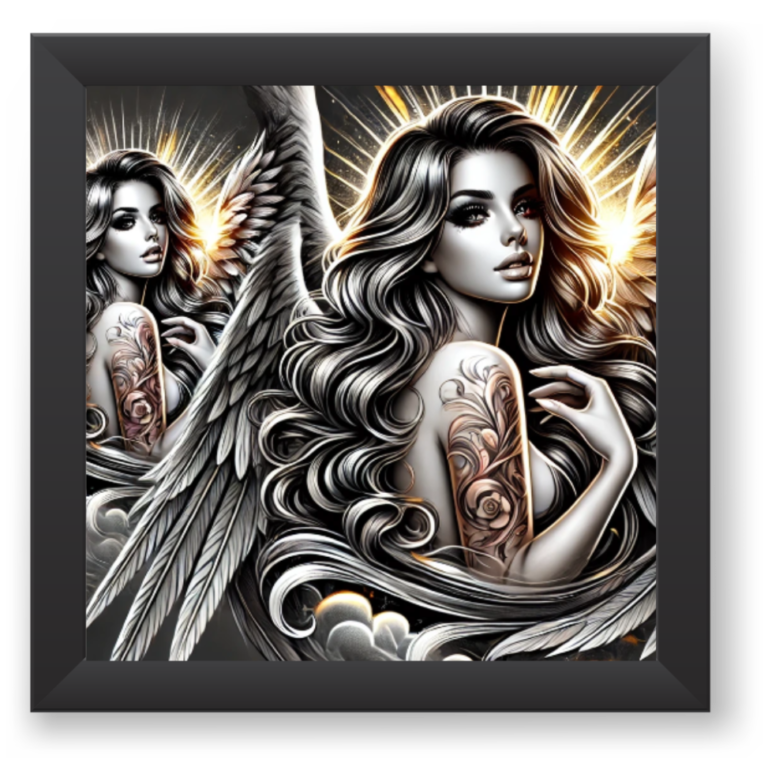
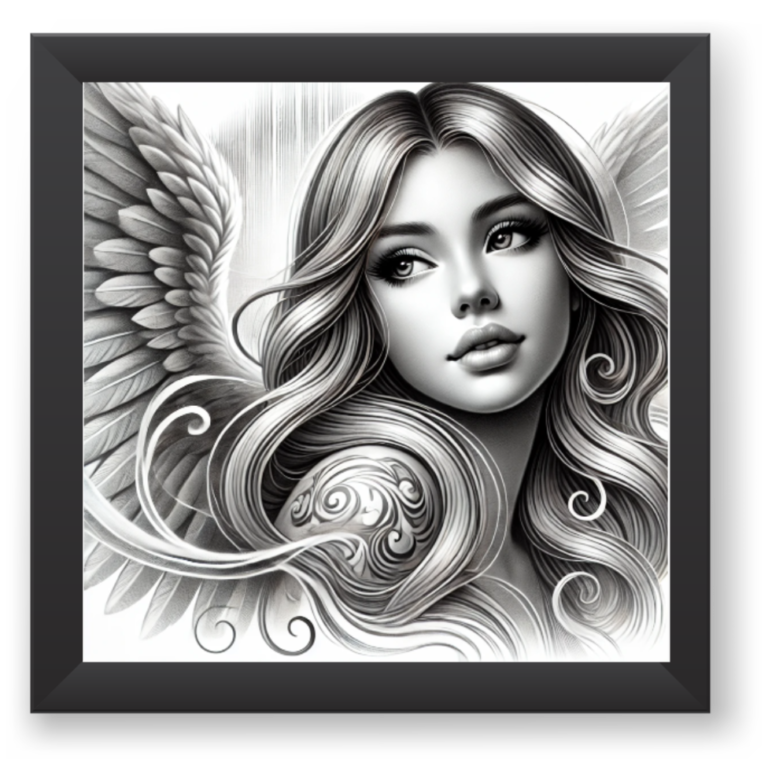
Popular Angel Tattoo Inspirations
- Archangels: Figures like Archangel Michael are depicted as powerful and protective, often shown with a sword or shield. These tattoos symbolize strength, justice, and divine intervention.
- Cherub Tattoos: These small, playful, child-like angels symbolize innocence and love. They’re often used in a lighter, more playful context.
- Victorian/Baroque Angels: Inspired by classical art, these angels are often depicted with a sense of grandeur, flowing robes, and intricate wings, mirroring Renaissance or Baroque paintings.
Placement and Flow with the Body
A big part of designing angel tattoos is understanding how the artwork flows with the natural lines of the body. Placement is critical.
Placement of Angel Tattoos:
- Back: A popular location for larger, full-winged angel tattoos, especially guardian angels or angel wings spanning across the shoulders and back.
- Arm/Forearm: Angels or cherubs can fit well on the arm or forearm, often chosen for their visibility and ability to carry detailed work.
- Chest: Angel tattoos placed near the heart often signify a deep, personal connection to faith or the memory of a loved one.
- Sleeve: Full or half-sleeve tattoos can incorporate multiple elements, such as angels, clouds, and religious symbols, creating a dynamic, flowing design.
- Legs/Thighs: Larger tattoos, such as fallen angels or dramatic guardian angels, work well on the thigh or calf for a powerful and prominent design.
Always think about how the tattoo will age and evolve with the body. Well-placed angel wings can give a sense of motion and energy, while a detailed face of an angel needs enough space to capture the fine details without losing quality over time.
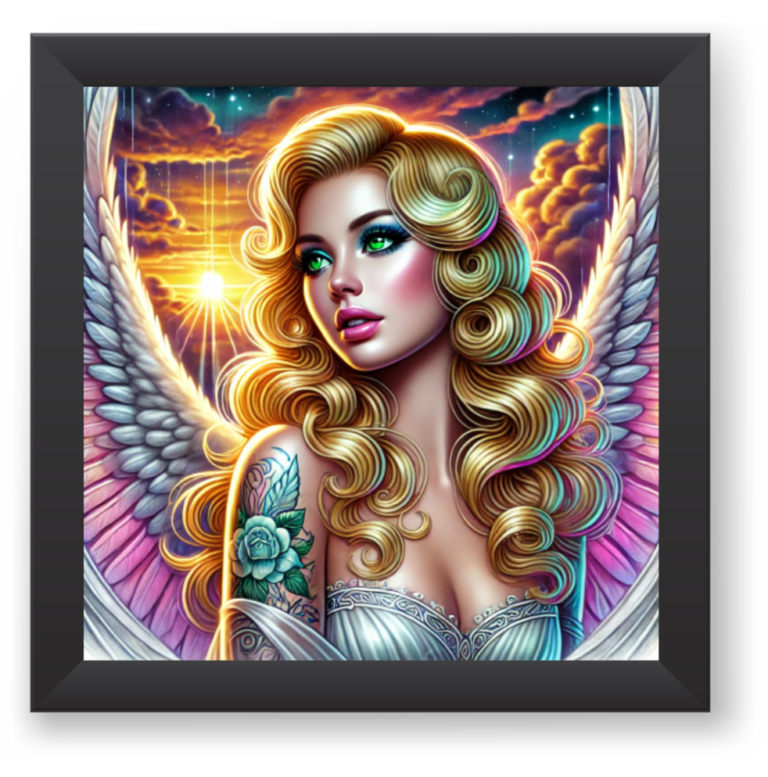
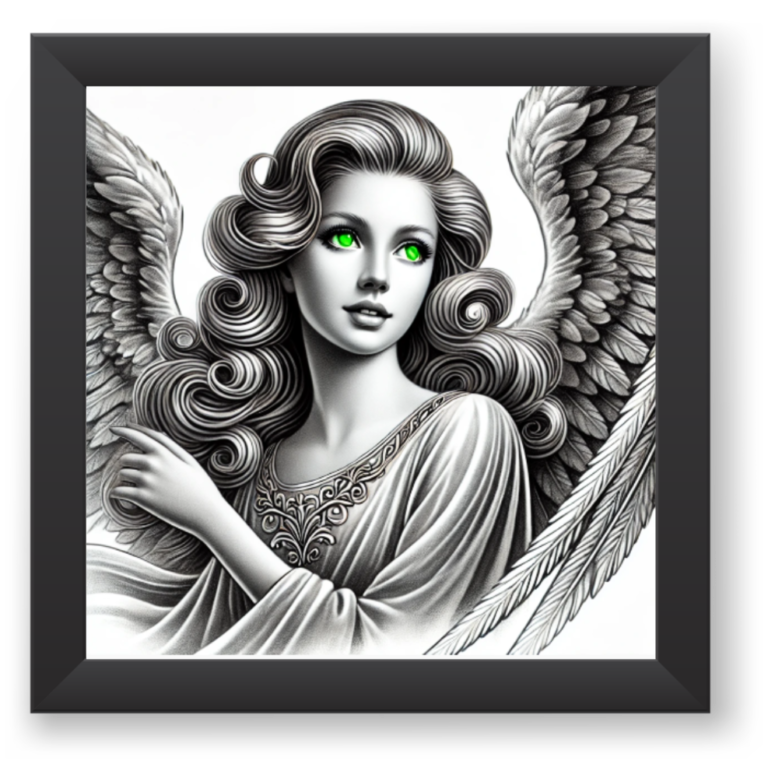
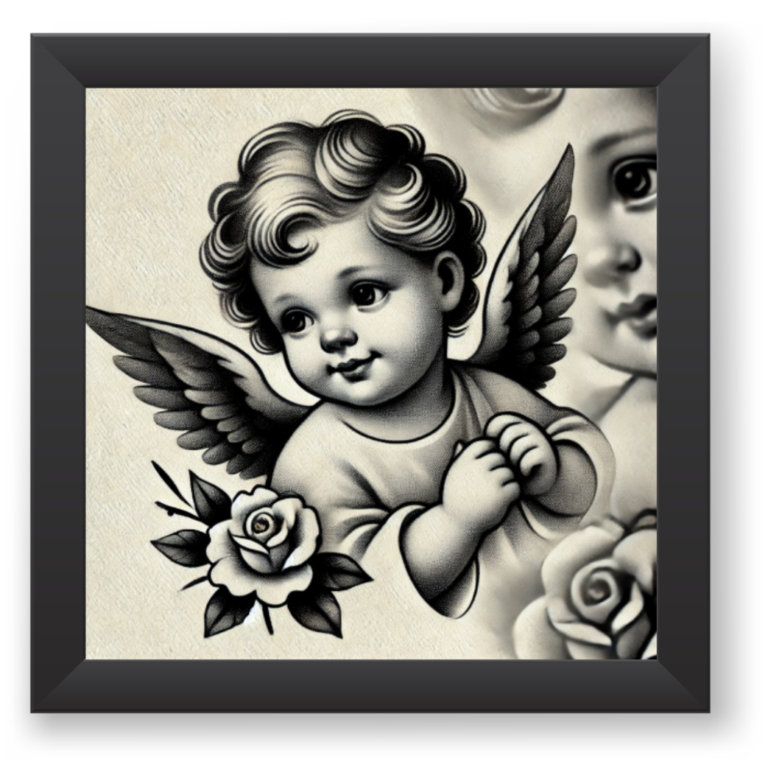
Black and Grey vs. Color
- Black and grey gives an elegant, timeless look, allowing for incredible detail in the wings, shadows, and facial expressions. The soft shading adds depth and texture, making the angel seem almost ethereal. This style also lends itself well to memorial or spiritual pieces, offering a serene, classic finish.
- Color can bring the tattoo to life, especially when used sparingly for accents like glowing halos, vibrant wings, or radiant robes. Blending color gradients, like transitioning from soft blues and whites in the wings to warmer golds or reds in the background, creates a divine glow.
Customization and Personal Touch
One of the most important aspects of designing angel tattoos is customization. Angels can be deeply personal symbols, and anyone who has them has their own connection to the concept. Whether it’s incorporating a loved one’s initials, a religious symbol, or a meaningful phrase, A tattoo artist will listen to their client’s story and add subtle personal details that make the tattoo unique. Every angel tattoo should feel like it was made specifically for that client, capturing their story, belief, or memory in a way that resonates with them.
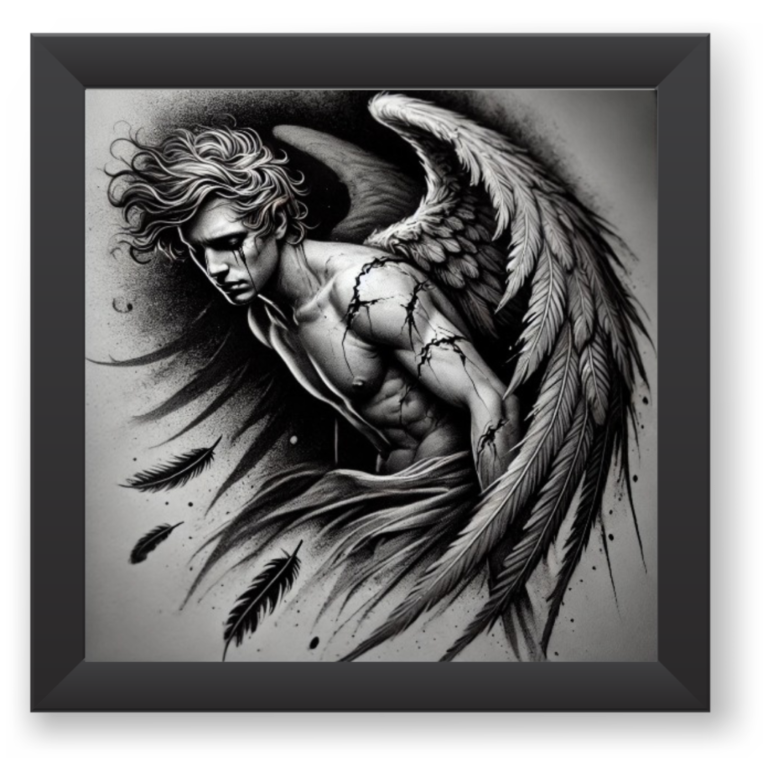
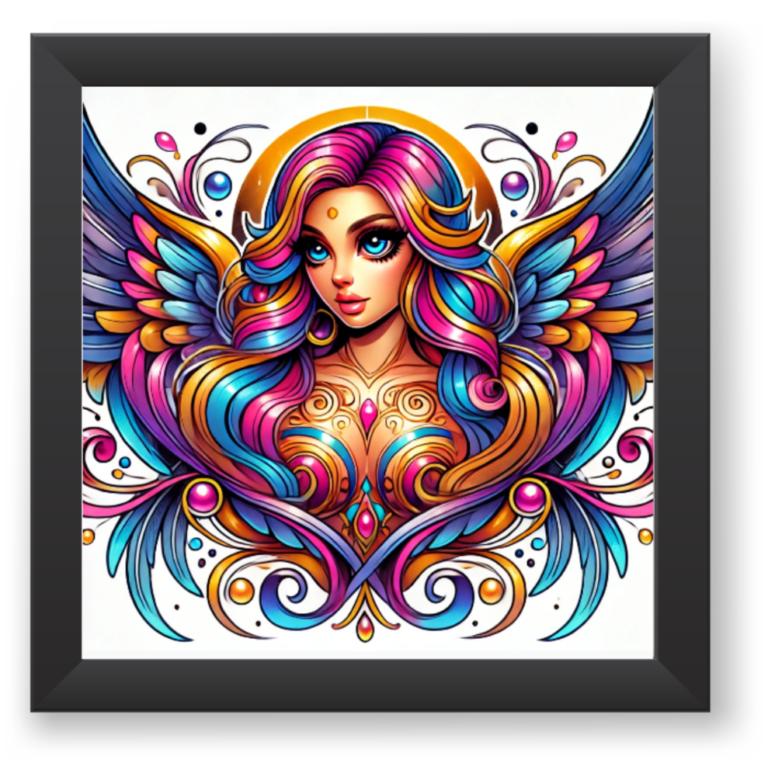
The Emotional Impact
Angel tattoos can be tied to powerful emotions—whether it’s love, loss, faith, or hope. A tattooist will approach these tattoos with respect and care, aiming to capture not just the visual beauty of an angel, but also the emotional depth that goes with it. Because they know that it may represent something sacred or deeply personal. The goal is always to ensure that the tattoo is not only a work of art but also something the client connects with on a profound level.
Challenges and Opportunities
Angel tattoos can come with some unique challenges, where the tattooist sees an opportunity to push the design further.
- Capturing facial expressions and body language in an angel tattoo can be complex, especially in smaller designs. It’s important to make sure the angel doesn’t look too generic. Crafting unique features that bring out the emotional tone, whether it’s a serene expression or a fierce, protective stance.
- Wing details require patience and precision. Angel wings are an essential element, and getting the feathers, shading, and movement just right is key to giving the tattoo its ethereal quality. Tattooist can get intricate, adding layers and depth that make the wings feel as though they could lift off the skin.
Approach
One way to approach creating angel tattoos is to blend technical skill with artistic intuition. Creating something timeless, a piece that the client will feel connected to for the rest of their life. making every feather, every shadow, and every detail count. The goal is not just to make the angel look beautiful but to bring out the symbolism that resonates with the client. Whether it’s a guardian angel watching over them or a fallen angel reflecting their inner struggles, aiming to give the tattoo a narrative that is deeply personal yet universally impactful.
Final Thoughts
Angel tattoos are more than just stunning visuals—they are stories, emotions, and symbols of the human experience. Creating them is an honor designing art for someone but helping express someone’s innermost feelings, beliefs, and memories. Whether it’s a large guardian angel spread across the back or a delicate cherub on the arm, the beauty of angel tattoos lies in their ability to combine strength, grace, and personal meaning in ways that other designs rarely do.
